Meet The Largest Reptiles From Each U.S. State
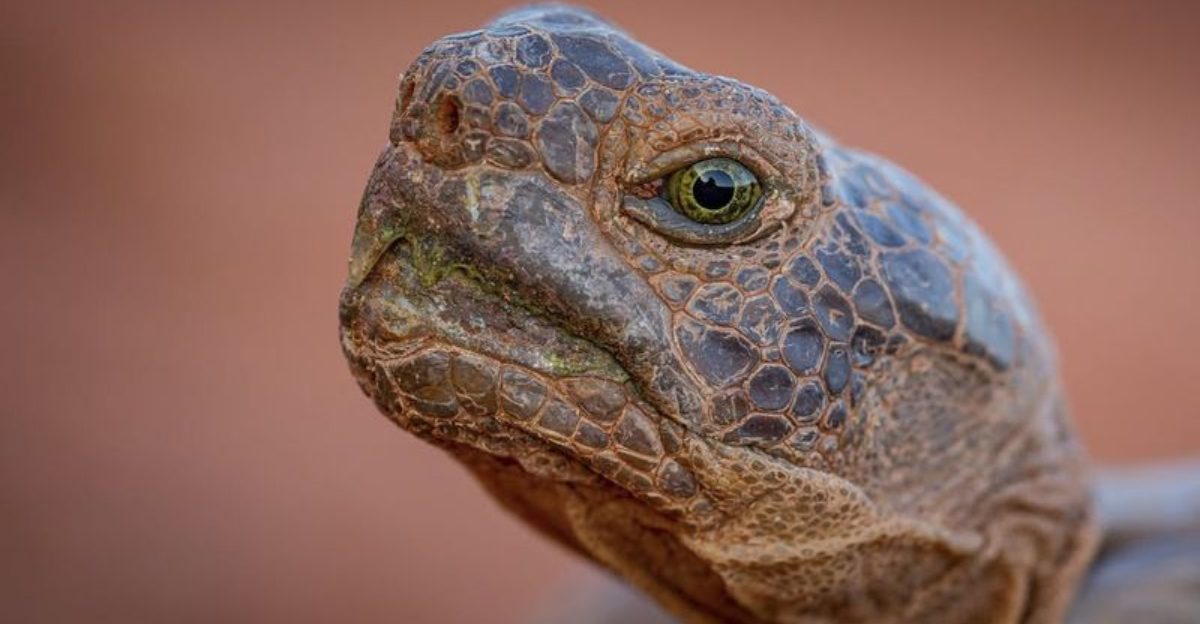
Embark on an intriguing journey across the United States as we introduce you to the largest reptiles from each state. From sunbathing alligators in Southern swamps to elusive lizards basking on rocky outcrops, these remarkable creatures showcase the diverse and vibrant wildlife found across the nation.
Prepare to meet the reptiles that reign supreme in size, captivating curiosity and admiration along the way. Each state holds its own scaly surprise, awaiting discovery by keen-eyed nature enthusiasts.
1. American Alligator (Alabama)
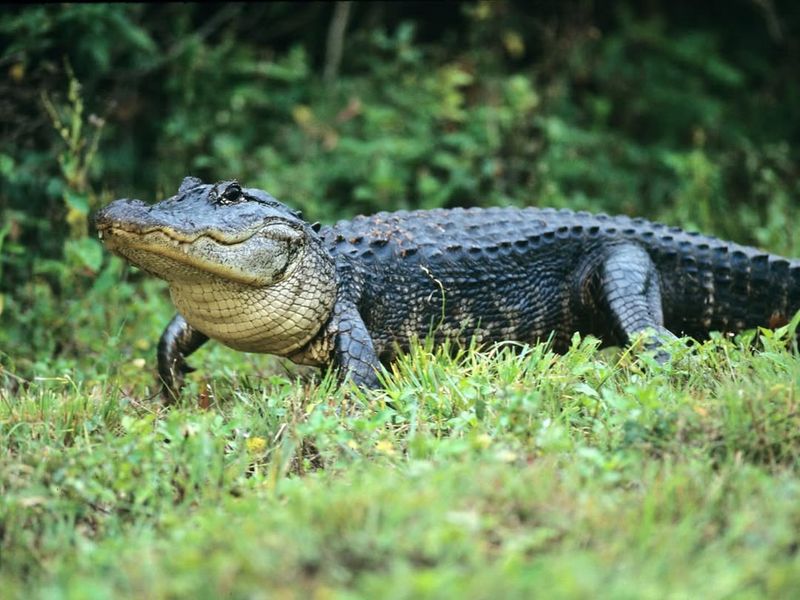
In the heart of Alabama, the American Alligator reigns supreme as the largest reptile. These formidable creatures can grow up to 15 feet long and weigh over 1,000 pounds. Despite their intimidating appearance, alligators are essential to their ecosystem, maintaining the balance of aquatic environments.
These apex predators are often spotted lounging by swampy riverbanks, soaking up the sun to regulate their body temperature. With a powerful tail and rugged scales, they embody a prehistoric charm.
While the thought of encountering an alligator may be daunting, they’re generally not aggressive unless provoked. For those venturing into Alabama’s swamps, it’s wise to keep a respectful distance. Capturing these majestic creatures through photography offers a thrilling glimpse into their world without intruding too much.
2. Western Painted Turtle (Alaska)
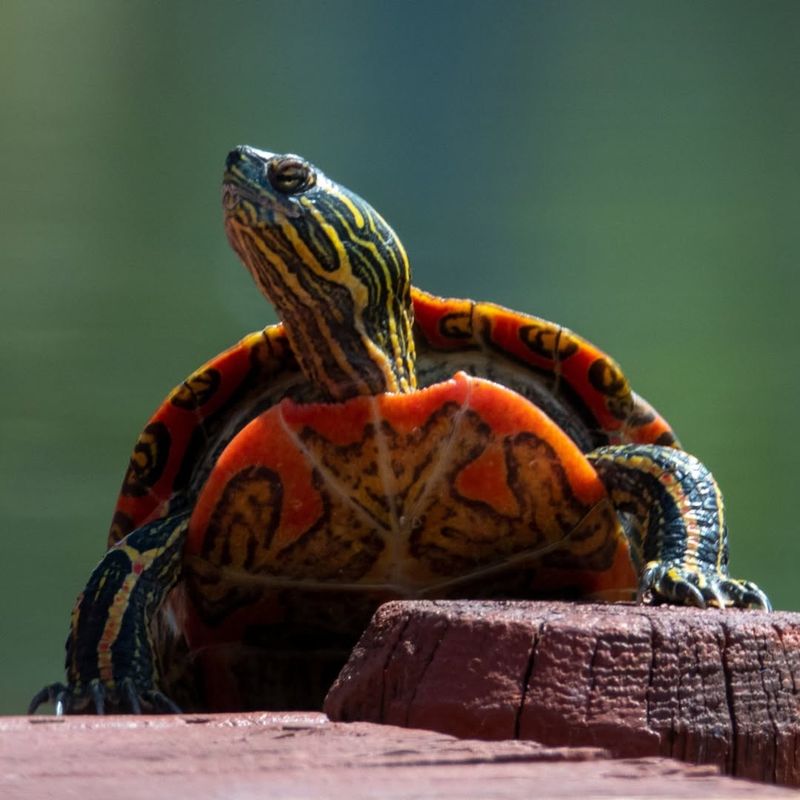
In the chilly landscapes of Alaska, the Western Painted Turtle emerges as the largest reptile, though it’s a modest size compared to its southern relatives. Measuring up to 10 inches in shell length, these turtles are a testament to resilience in colder climates.
Their striking red and yellow shell markings make them stand out in the serene Alaskan waters. They can often be found basking on rocks, absorbing much-needed warmth from the sun.
Despite the harsh Alaskan environment, these turtles thrive by hibernating during freezing months, showcasing a remarkable adaptation. Observing them in their natural habitat offers a unique insight into the tenacity of life in the north.
3. Gila Monster (Arizona)
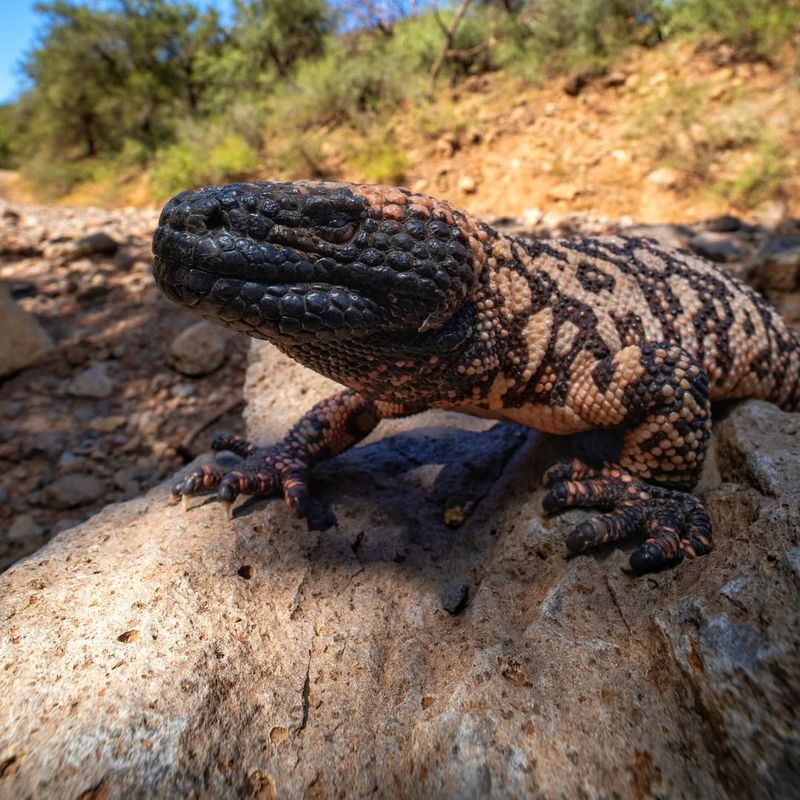
Arizona’s scorching deserts are home to the Gila Monster, a lizard of impressive size and vibrant coloration. Reaching lengths of 2 feet, this reptile is renowned for its unique orange and black patterned skin.
The Gila Monster is one of the few venomous lizards in the world, though it’s not typically a threat to humans. Its venom, used primarily for defense, adds to its mystique.
These lizards are often seen navigating the rocky desert terrain, a testament to the harsh environment they call home. Observing a Gila Monster in Arizona is witnessing a living piece of desert art, combining beauty and survival.
4. Alligator Snapping Turtle (Arkansas)
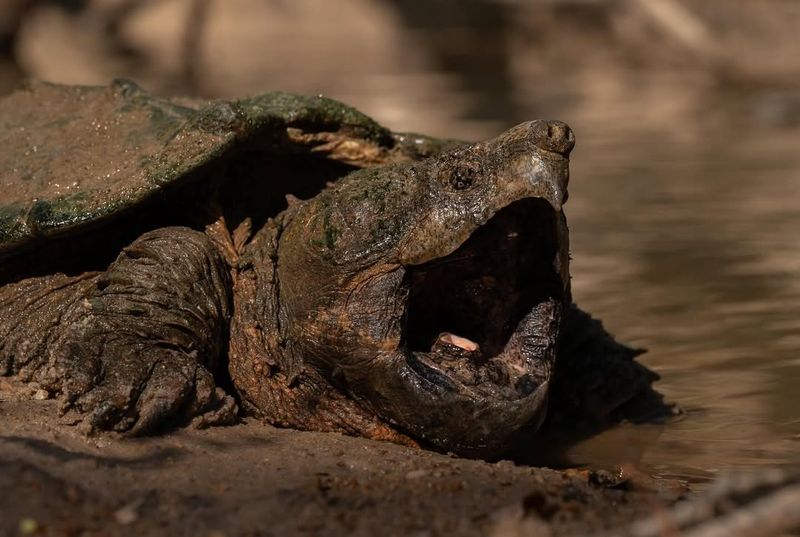
In Arkansas, the Alligator Snapping Turtle holds the title of the largest reptile, with some individuals weighing over 200 pounds. Known for their dinosaur-like appearance, these turtles are true masters of disguise in murky waters.
Their powerful jaws and rugged shell make them formidable predators in their aquatic realm. They employ a unique hunting strategy, using a worm-like appendage on their tongue to lure unsuspecting prey.
Although they may appear menacing, these turtles are part of a delicate ecosystem, playing a crucial role in maintaining the health of Arkansas’s waterways. Encountering one is like stepping back in time, meeting a creature from an ancient era.
5. California Kingsnake (California)
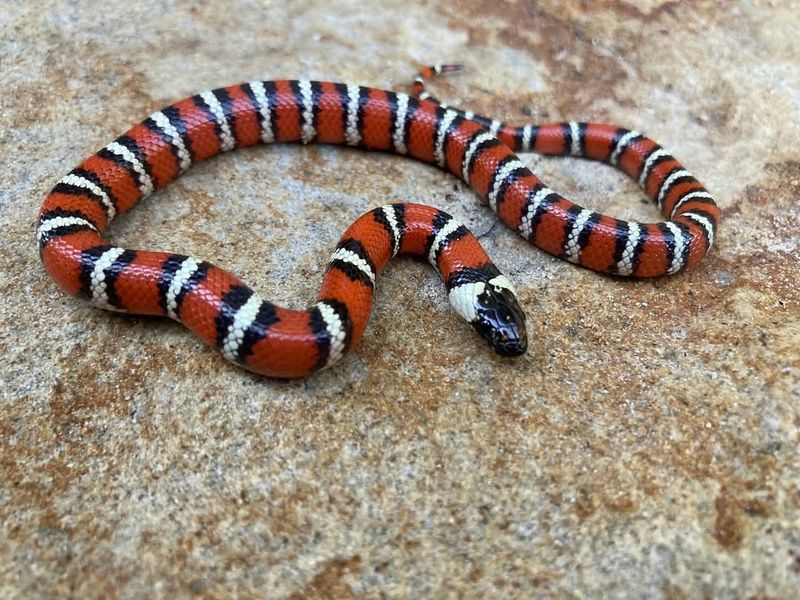
In the diverse landscapes of California, the California Kingsnake emerges as a fascinating reptilian resident. Though not the largest in size, its striking black and white bands make it a standout.
This snake, reaching lengths of over 6 feet, is a master of adaptability, thriving in various environments from deserts to suburban areas. Its diet is equally diverse, including rodents, birds, and even other snakes.
The kingsnake’s immunity to venom makes it a formidable opponent, often preying on rattlesnakes. Observing this snake in its natural habitat reveals a creature of elegance and resilience, perfectly adapted to the Californian wilderness.
6. Western Pond Turtle (Colorado)

In the picturesque state of Colorado, the Western Pond Turtle claims the title of the largest reptile, although it’s quite humble in size compared to others. These turtles can grow up to 8 inches in length.
Their mottled brown and yellow shells provide excellent camouflage among the pond vegetation. They’re often seen basking on logs or rocks, soaking up the sun’s warmth.
Western Pond Turtles are a testament to the tranquil beauty of Colorado’s aquatic habitats. Their presence indicates a healthy ecosystem, and observing them offers a peaceful connection with nature.
7. Eastern Box Turtle (Connecticut)
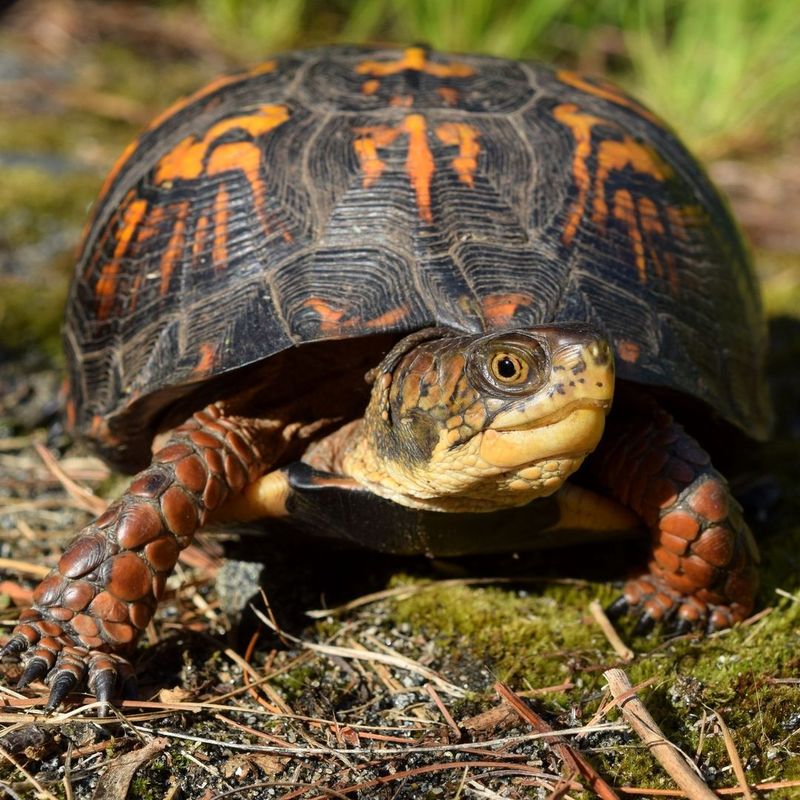
In the lush forests of Connecticut, the Eastern Box Turtle stands as the largest reptile, captivating with its colorful shell. These turtles can grow up to 6 inches long, displaying intricate orange and yellow patterns.
Their domed shells provide excellent protection, allowing them to retreat entirely within when threatened. This unique adaptation is a testament to their survival in diverse environments.
Eastern Box Turtles are often spotted on forest floors, their slow and deliberate movements blending seamlessly with the surroundings. Encountering one offers a glimpse into the serene pace of woodland life, a reminder of nature’s delicate balance.
8. Spiny Softshell Turtle (Delaware)
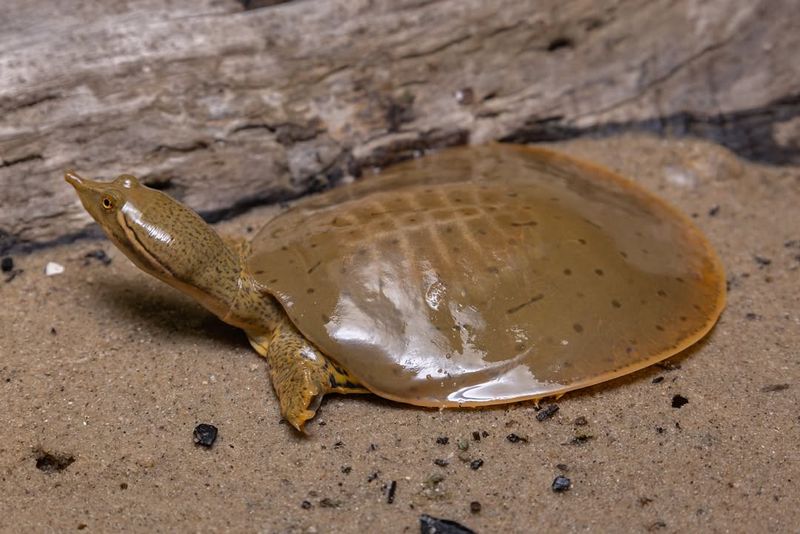
In the small state of Delaware, the spiny softshell turtle claims the title of the largest reptile. Known for its unusual leathery shell with tiny spines, this turtle thrives in the state’s gentle streams and ponds. Its preference for sandy and muddy bottoms allows it to blend seamlessly into its environment.
The turtle’s long neck and snorkel-like snout are perfectly adapted for stealthy breathing while submerged. These fascinating features make it an expert ambush hunter, lying in wait for unsuspecting prey. Despite its size, the spiny softshell turtle is agile, often surprising observers with its swift movements beneath the water’s surface.
If you’re ever in Delaware, take a moment to appreciate this remarkable reptile, a true testament to the unique biodiversity of the region. With patience and a keen eye, you might just catch a glimpse of this leathery giant basking in the sun.
9. American Crocodile (Florida)
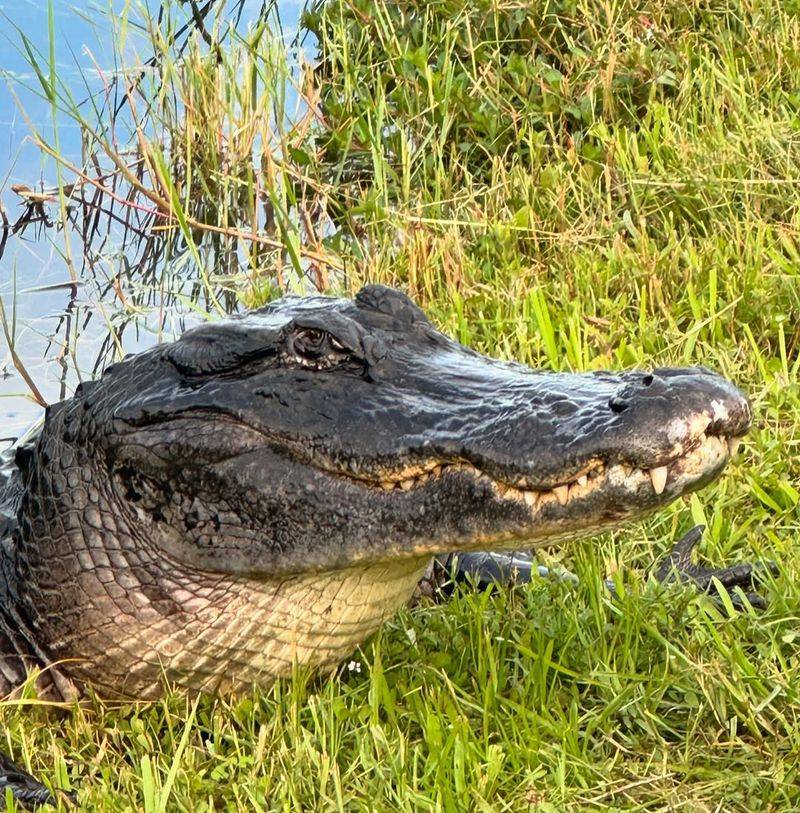
Florida’s warm wetlands are home to the impressive American Crocodile, a reptile that commands attention with its size and presence. These crocodiles can reach lengths of 20 feet, their sleek bodies designed for stealthy navigation through mangrove waters.
Unlike their alligator counterparts, American Crocodiles prefer saltwater habitats, often spotted basking in the sun with their toothy grins on display. Their presence is a testament to Florida’s rich biodiversity.
Despite their fearsome reputation, crocodiles are generally reclusive, avoiding human interaction. Observing them in the wild is an exhilarating experience, offering a rare glimpse into the life of a true apex predator.
10. Eastern Diamondback Rattlesnake (Georgia)
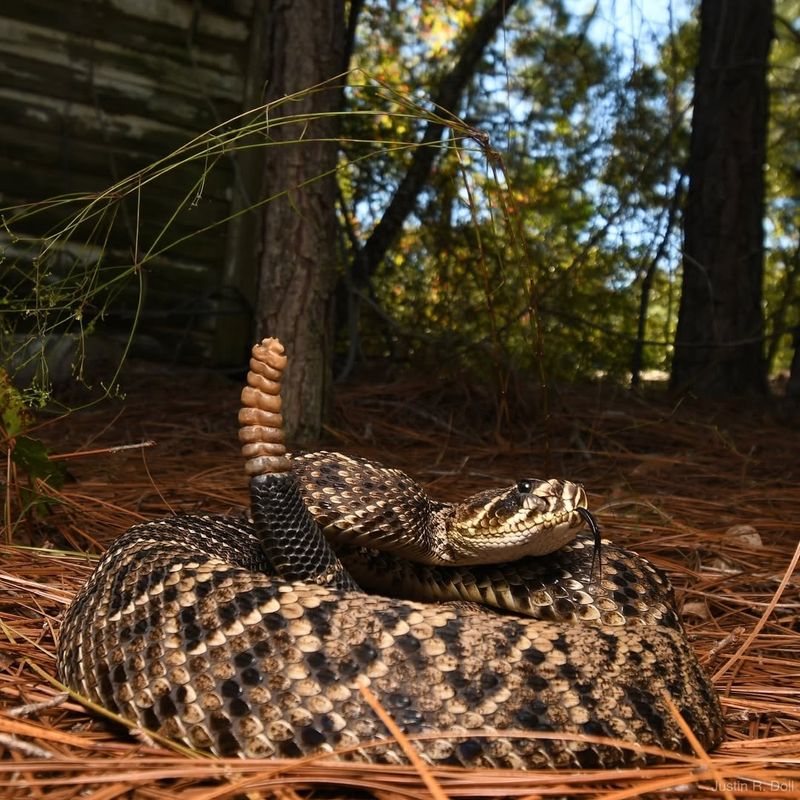
In Georgia’s diverse habitats, the Eastern Diamondback Rattlesnake is a reptile of note, boasting impressive size and striking patterns. These snakes can grow over 6 feet long, their diamond patterns a signature feature.
Known for their distinctive rattle, these snakes use it as a warning to potential threats. Despite their fearsome appearance, they prefer to avoid confrontation, relying on their camouflage to go unnoticed.
Encountering an Eastern Diamondback in the wild is both thrilling and humbling. Their presence is a reminder of the intricate balance within Georgia’s ecosystems, where even the most feared creatures play vital roles.
11. Green Sea Turtle (Hawaii)
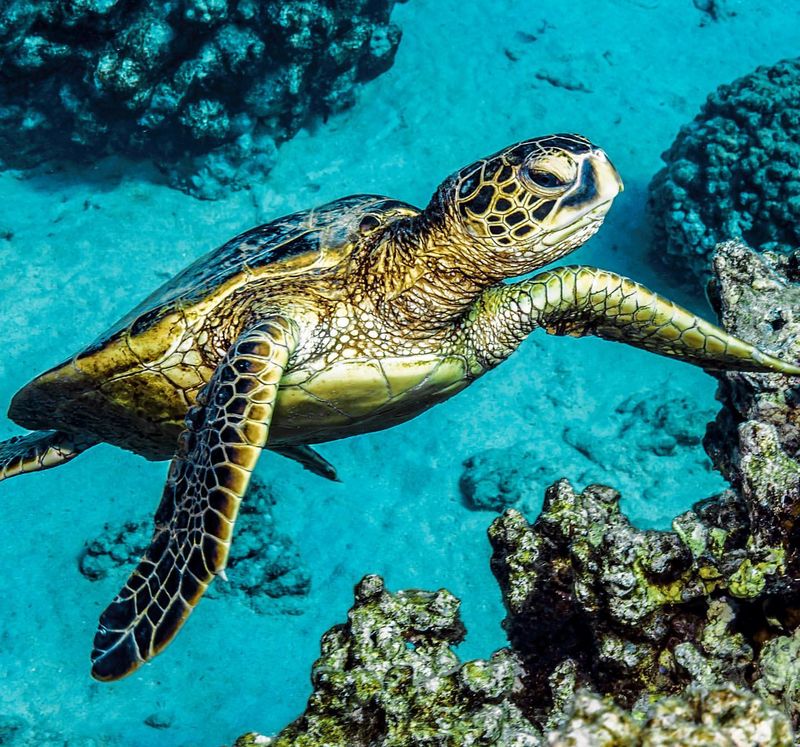
Hawaii’s tropical paradise is graced by the presence of the Green Sea Turtle, a majestic reptile that captures the essence of island life. These turtles can weigh up to 500 pounds, their impressive size matched by their graceful movements.
In the clear blue waters, they’re often spotted gliding effortlessly among vibrant coral reefs, a living symbol of Hawaii’s natural beauty. Their diet mainly consists of seagrass and algae, crucial in maintaining the health of the reef ecosystem.
Despite being endangered, efforts to protect these turtles have seen populations stabilize, offering hope for their future. Observing a Green Sea Turtle in its Hawaiian habitat is a truly magical experience.
12. Rubber Boa (Idaho)
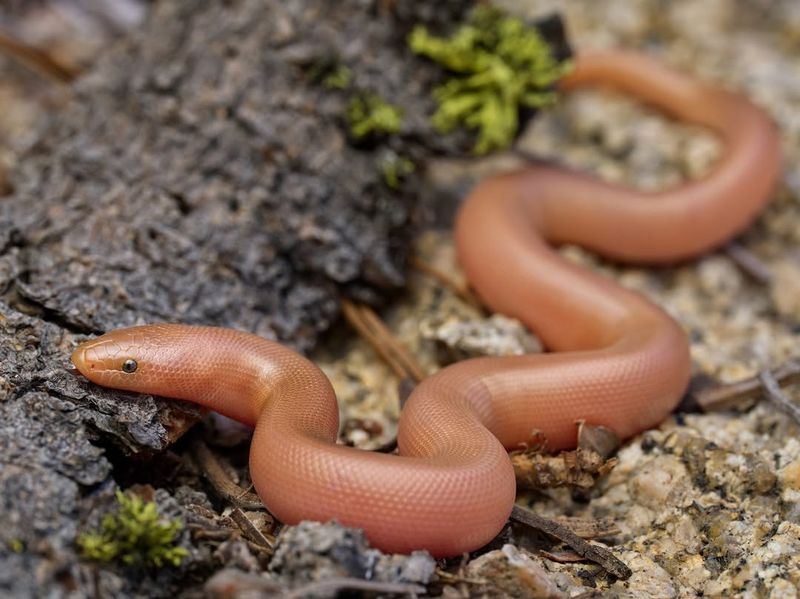
Idaho’s serene forests are home to the unassuming Rubber Boa, the state’s largest reptile in terms of uniqueness rather than size. These snakes rarely exceed 2 feet in length but are fascinating nonetheless.
Their smooth, shiny skin gives them a rubbery appearance, a feature that has earned them their peculiar name. They’re often found coiled under logs or leaf litter, where they search for prey.
Despite their small size, Rubber Boas are skilled hunters, preying on small mammals and birds. Their gentle demeanor makes them intriguing subjects for those exploring Idaho’s natural landscapes.
13. Common Snapping Turtle (Illinois)
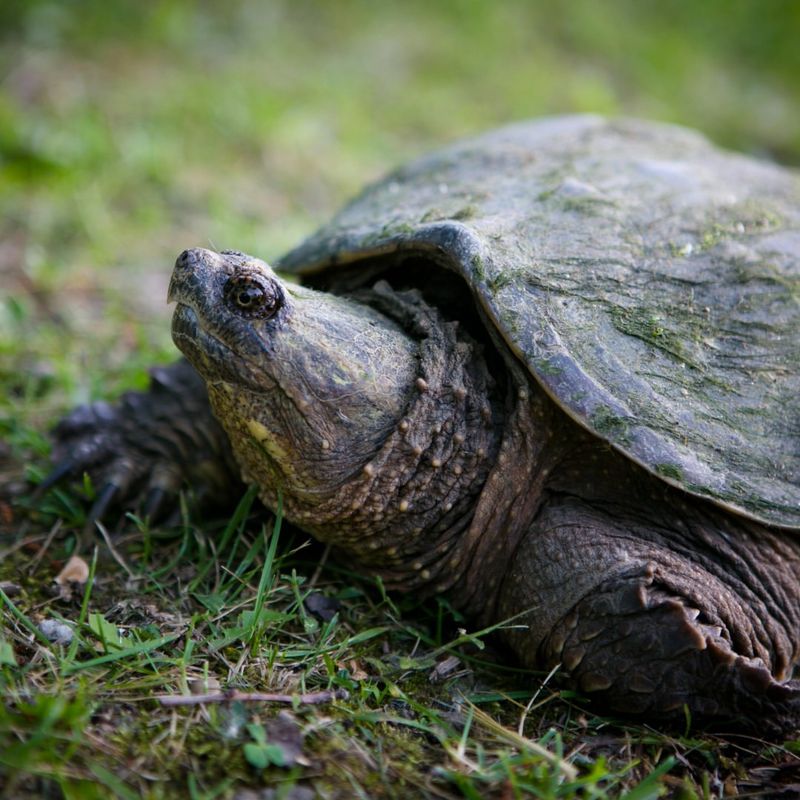
In the heartlands of Illinois, the Common Snapping Turtle is a reptile of formidable reputation, known for its size and attitude. These turtles can weigh up to 35 pounds, their rugged shells giving them a prehistoric appearance.
Snapping turtles are often found lurking in murky ponds and rivers, waiting patiently for prey. Their powerful jaws and fierce expression make them effective predators in their aquatic domain.
While they may seem intimidating, snapping turtles play a crucial role in their ecosystem, controlling fish populations and cleaning waterways. Observing one in its natural habitat offers a glimpse into the hidden dynamics of aquatic life.
14. Eastern Hellbender (Indiana)
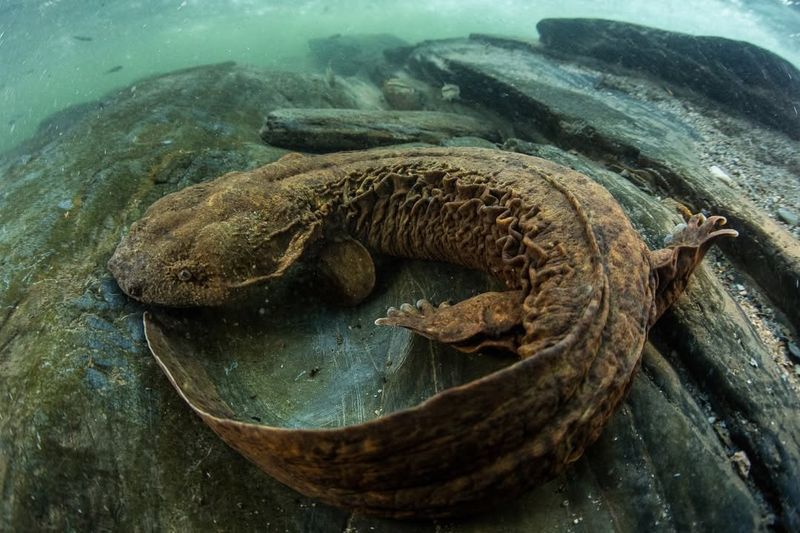
Indiana’s freshwater streams are home to the Eastern Hellbender, a giant salamander often mistaken for a reptile due to its size and appearance. These creatures can grow up to 2 feet long, their wrinkled skin adding to their bewildering looks.
Despite their name, hellbenders are harmless creatures, preferring to avoid human encounters. They spend their lives submerged, relying on clean, oxygen-rich water to thrive.
The presence of hellbenders is an indicator of a healthy aquatic ecosystem. Observing one in Indiana’s streams is an opportunity to witness a living fossil, a testament to nature’s enduring legacy.
15. Timber Rattlesnake (Iowa)
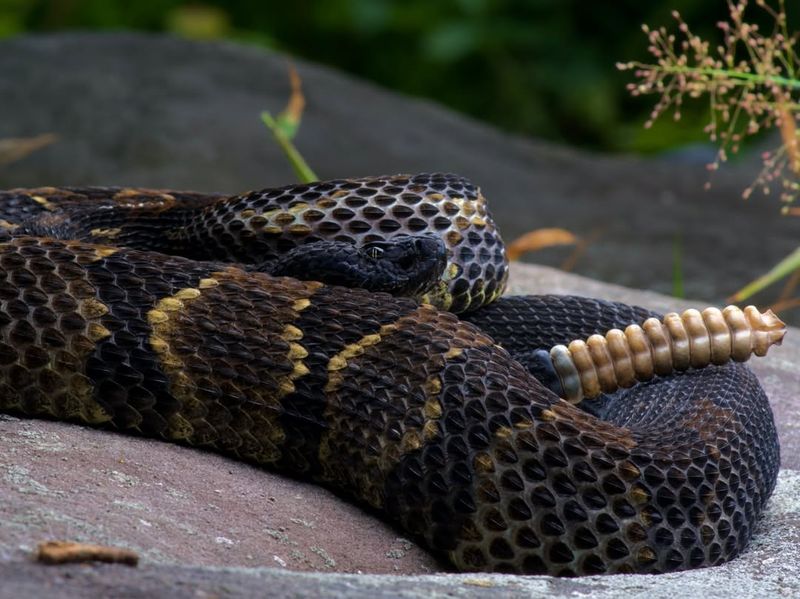
In the woodlands of Iowa, the Timber Rattlesnake emerges as a captivating reptile, known for its size and formidable presence. These snakes can grow over 5 feet long, their scales providing perfect camouflage among the leaves.
The Timber Rattlesnake’s rattle is a distinctive feature, used to warn potential threats. Despite their intimidating presence, they prefer to remain hidden, avoiding unnecessary confrontation.
Encountering a Timber Rattlesnake in Iowa is a rare and thrilling experience. Their role in controlling rodent populations highlights the importance of conserving these remarkable reptiles in their natural habitat.
16. Prairie Rattlesnake (Kansas)
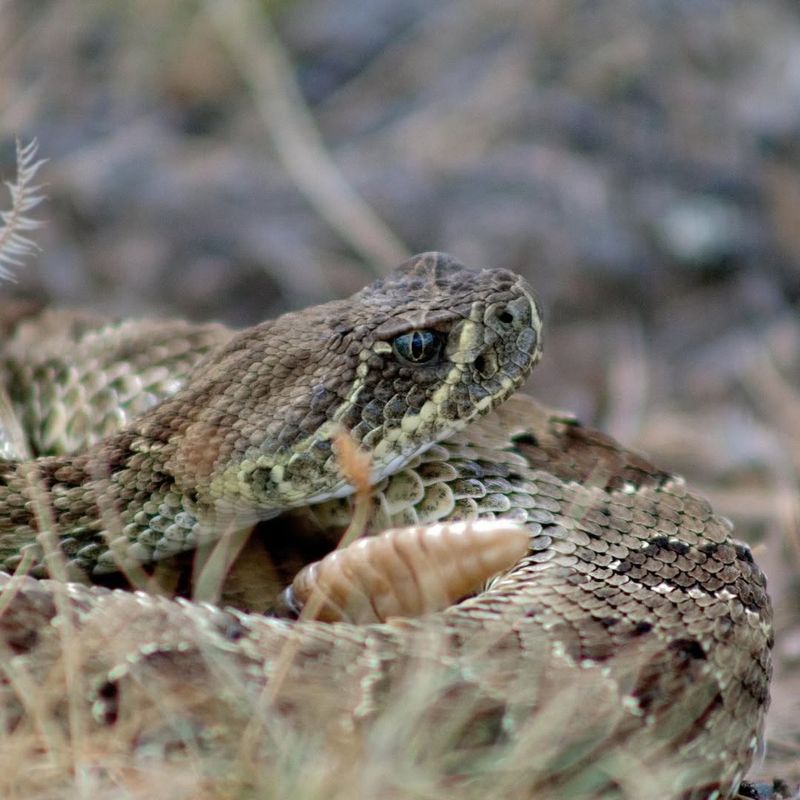
The vast prairies of Kansas are home to the Prairie Rattlesnake, a reptile that commands respect with its size and striking appearance. These snakes can reach lengths of 4 feet, their distinct rattle a hallmark of their identity.
The Prairie Rattlesnake’s camouflage is remarkable, blending seamlessly with the grasslands where it hunts. Despite their fearsome reputation, these snakes are shy, only using their rattle as a last resort.
Observing a Prairie Rattlesnake in its natural habitat is a testament to the balance of life on the prairie, where each creature plays a vital role in the ecosystem’s harmony.
17. Eastern Box Turtle (Kentucky)
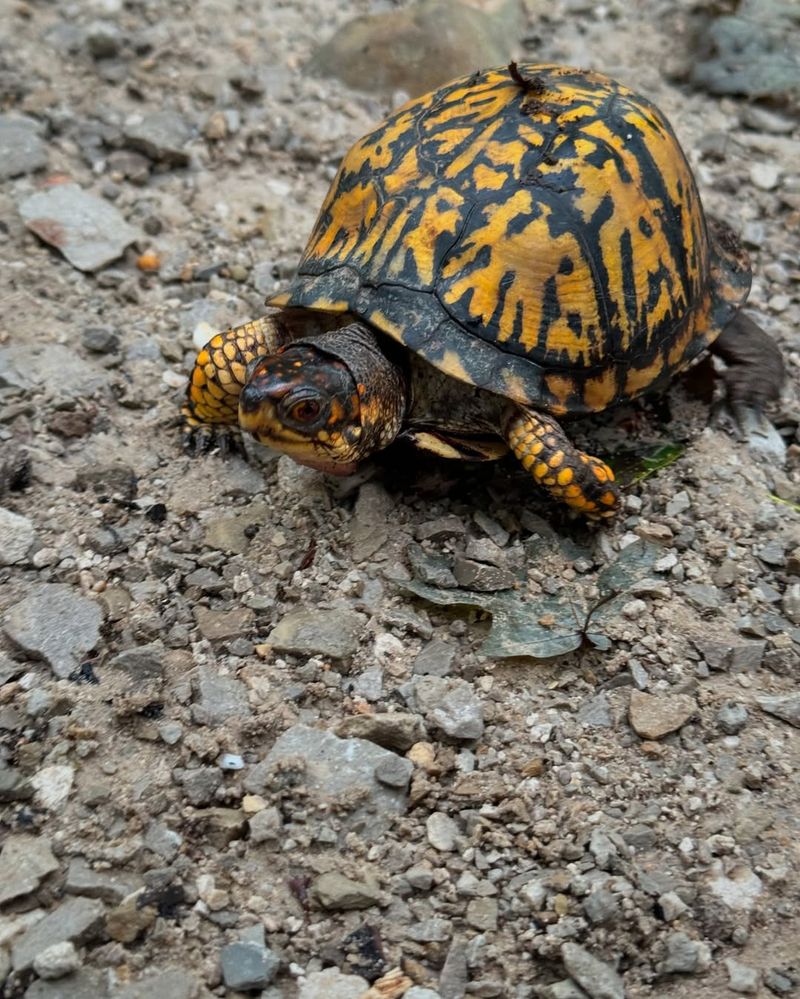
Kentucky’s lush forests are home to the Eastern Box Turtle, a reptile that captivates with its vibrant shell patterns. These turtles can grow up to 6 inches long, their colorful shells a visual delight.
The Eastern Box Turtle’s domed shell offers excellent protection, allowing it to retreat entirely within when threatened. This adaptation ensures their survival in diverse environments.
Encountering an Eastern Box Turtle in Kentucky offers a glimpse into the tranquil pace of forest life. Their presence is a reminder of the delicate balance in nature, where each creature has a role to play.
18. American Alligator (Louisiana)
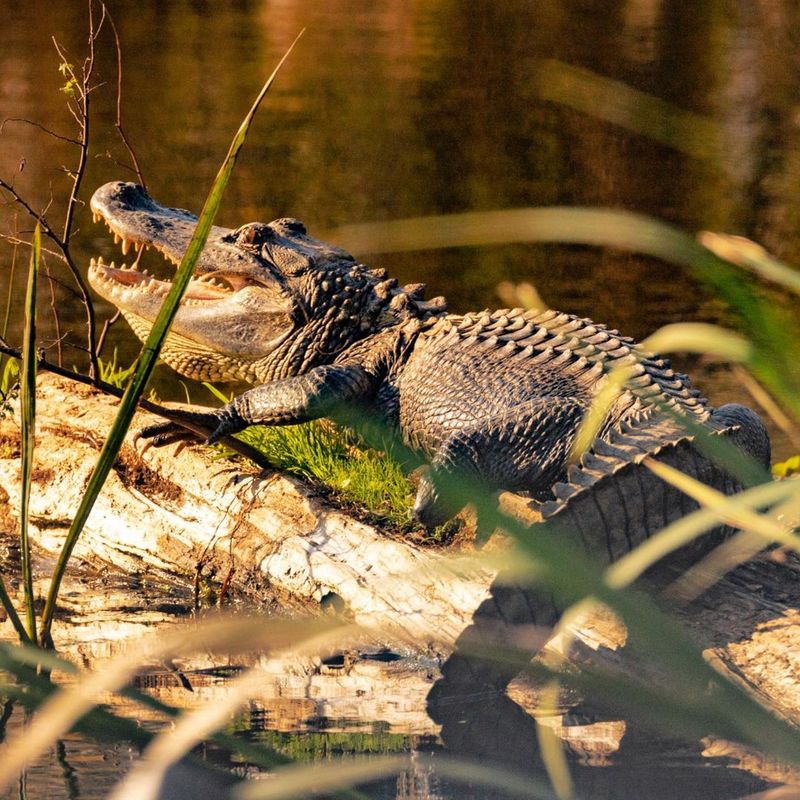
Louisiana’s mysterious bayous are home to the formidable American Alligator, a reptile synonymous with the state’s wild landscapes. These alligators can grow up to 15 feet long, their presence commanding respect in the watery depths.
In the misty waters, they can often be seen gliding silently, their eyes and rugged snout visible above the surface. Alligators are apex predators, playing a crucial role in their ecosystem by maintaining the balance of aquatic life.
Observing an American Alligator in Louisiana is like stepping into a world where time stands still, where ancient creatures roam free in untamed wilderness.
19. Common Snapping Turtle (Maine)
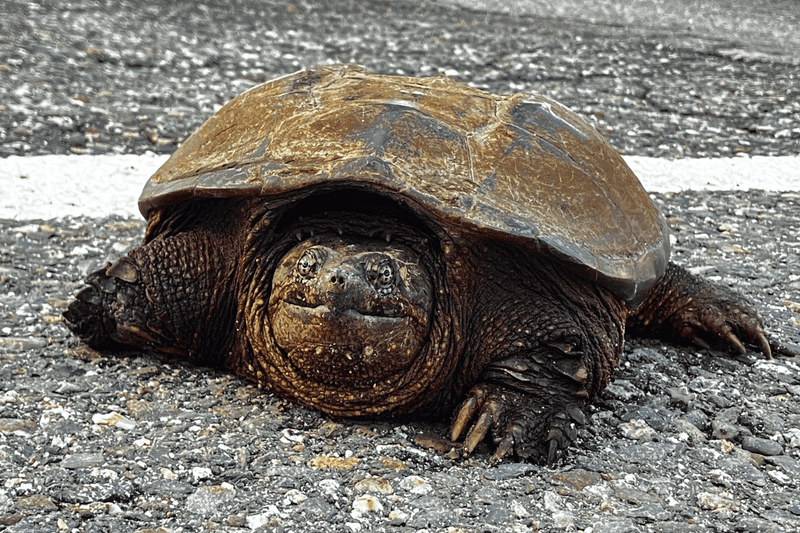
In the serene waters of Maine, the Common Snapping Turtle emerges as a reptile of note, known for its size and rugged appearance. These turtles can weigh up to 35 pounds, their prehistoric looks making them fascinating subjects.
Snapping turtles are often found lurking in lakes and ponds, their powerful jaws ready to secure a meal. Despite their fearsome expression, they’re an important part of the aquatic ecosystem, controlling fish populations.
Encountering a snapping turtle in Maine offers a glimpse into the hidden world of freshwater life, where ancient creatures continue to thrive amidst modern times.
20. Eastern Box Turtle (Maryland)
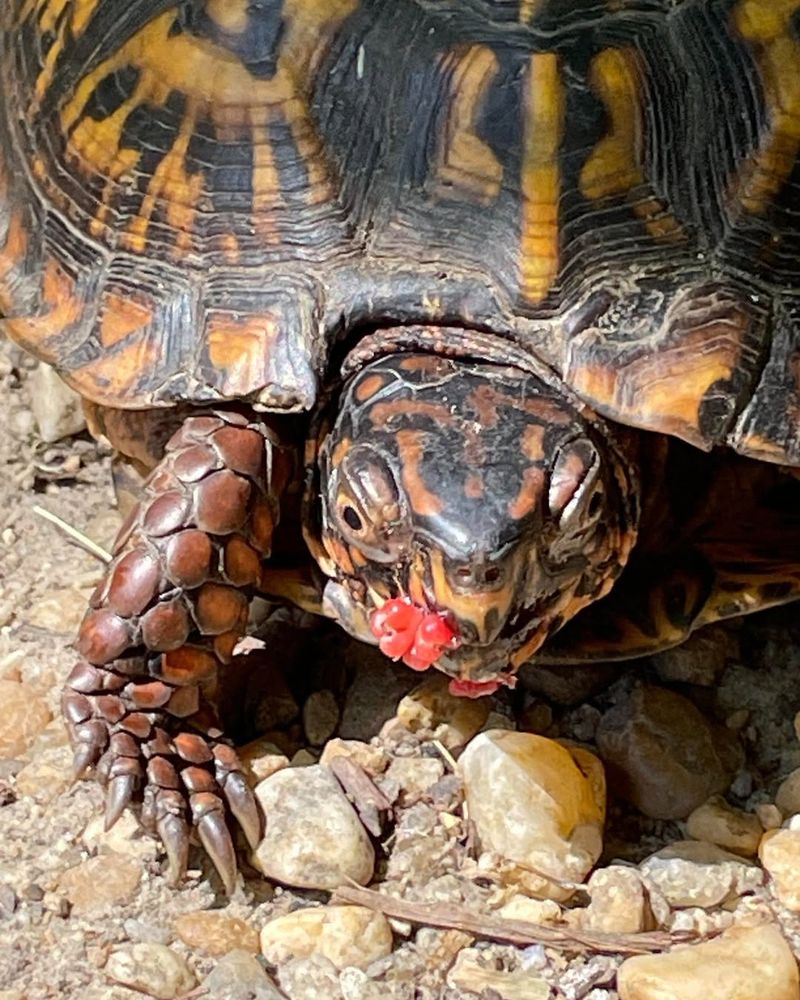
Maryland’s woodlands are home to the Eastern Box Turtle, a reptile that stands out with its colorful shell and gentle demeanor. These turtles can grow up to 6 inches long, their intricate patterns a visual treat.
With a domed shell that offers excellent protection, box turtles can retreat entirely within when threatened. This adaptation ensures their survival in diverse habitats.
Spotting an Eastern Box Turtle in Maryland is a delightful experience, offering a serene connection with the natural world. Their presence highlights the importance of conserving the delicate balance of forest ecosystems.
21. Black Rat Snake (Massachusetts)
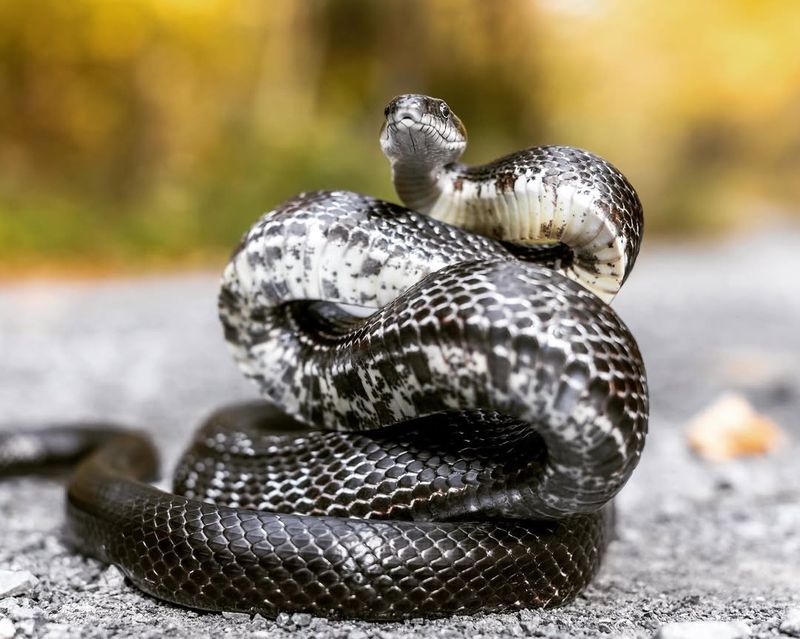
In the diverse landscapes of Massachusetts, the Black Rat Snake emerges as a fascinating reptile, known for its impressive length and sleek appearance. These snakes can grow over 6 feet long, their glossy black scales a standout feature.
The Black Rat Snake is an agile climber, often seen navigating trees and undergrowth in search of prey. Their diet primarily consists of rodents, helping control pest populations.
Despite their size, these snakes are non-venomous and pose little threat to humans. Observing a Black Rat Snake in Massachusetts offers a glimpse into the hidden dynamics of forest life, where each creature plays a vital role.
22. Common Snapping Turtle (Michigan)
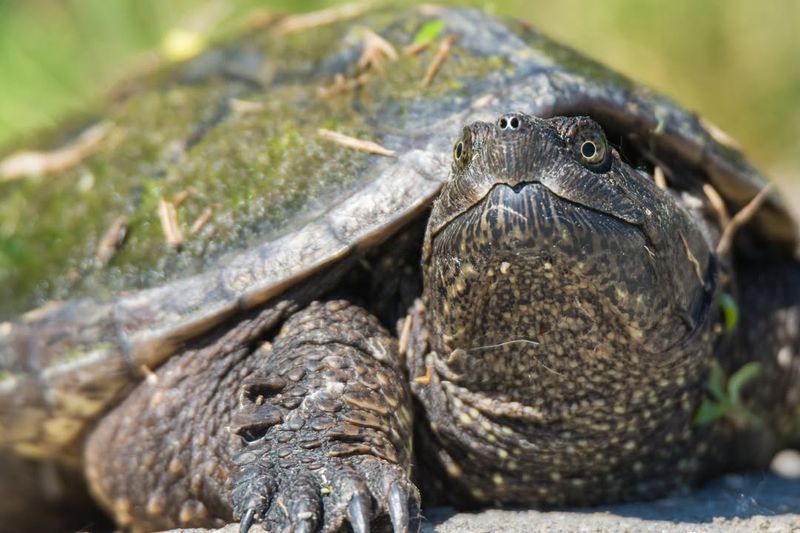
Michigan’s freshwater habitats are home to the Common Snapping Turtle, a reptile of formidable reputation known for its size and ancient appearance. These turtles can weigh up to 35 pounds, their rugged shells reminiscent of prehistoric times.
Snapping turtles are often found lurking in ponds and rivers, their powerful jaws and fierce demeanor making them effective predators in their domain. Despite their intimidating presence, they play a crucial role in maintaining the health of aquatic ecosystems.
Encountering a snapping turtle in Michigan offers a glimpse into the hidden world of freshwater life, where ancient creatures continue to thrive amidst modern landscapes.
23. Timber Rattlesnake (Minnesota)
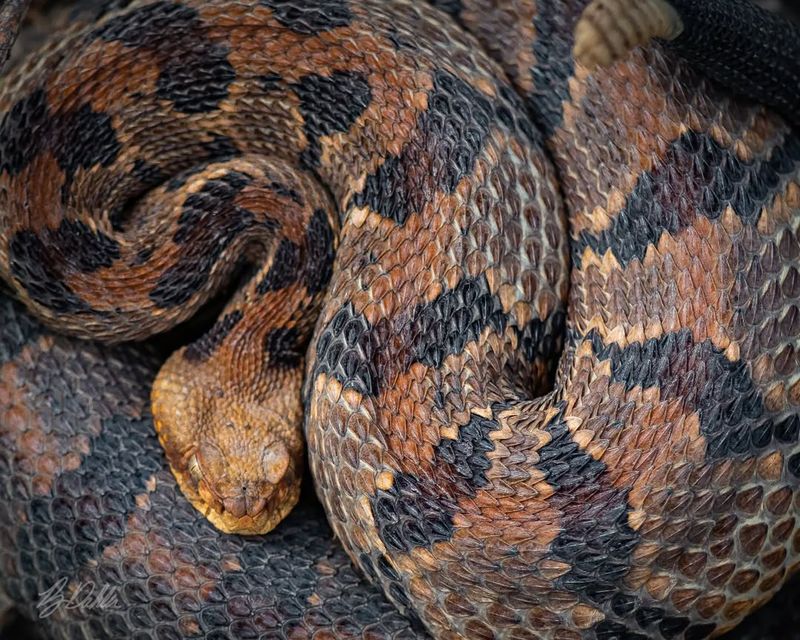
Minnesota’s rocky landscapes are home to the Timber Rattlesnake, a reptile that captivates with its size and formidable presence. These snakes can grow over 5 feet long, their scales providing perfect camouflage among the rocks.
The Timber Rattlesnake’s distinctive rattle is used to warn potential threats, though they prefer to remain hidden, avoiding unnecessary confrontation. They play a vital role in controlling rodent populations, highlighting their importance in the ecosystem.
Spotting a Timber Rattlesnake in Minnesota is a rare and thrilling experience, offering a glimpse into the delicate balance of nature where predators and prey coexist.
24. Eastern Box Turtle (Mississippi)
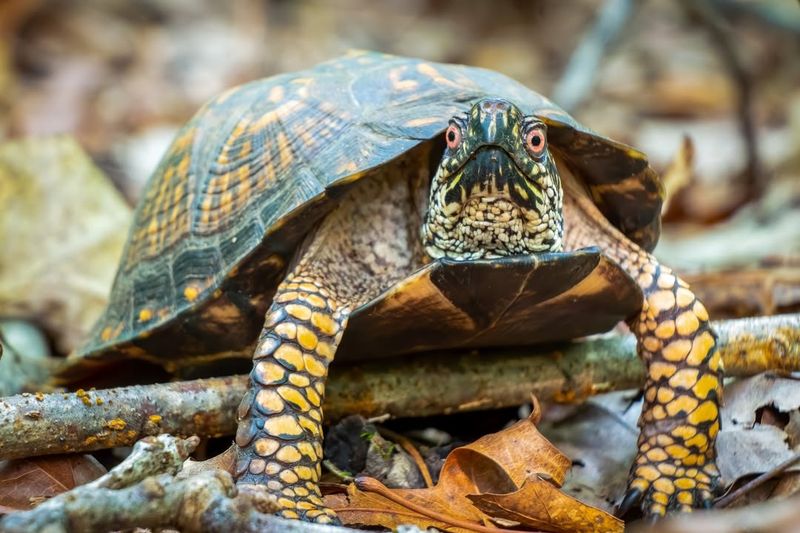
In the rich woodlands of Mississippi, the Eastern Box Turtle captivates with its colorful shell and gentle nature. These turtles can grow up to 6 inches long, their vibrant patterns a visual delight.
With a domed shell that offers excellent protection, box turtles can retreat entirely within when threatened. This adaptation ensures their survival in diverse environments.
Encountering an Eastern Box Turtle in Mississippi is a peaceful experience, offering a connection with the serene pace of forest life. Their presence highlights the importance of conserving the delicate balance of woodland ecosystems.
25. Three-Toed Box Turtle (Missouri)
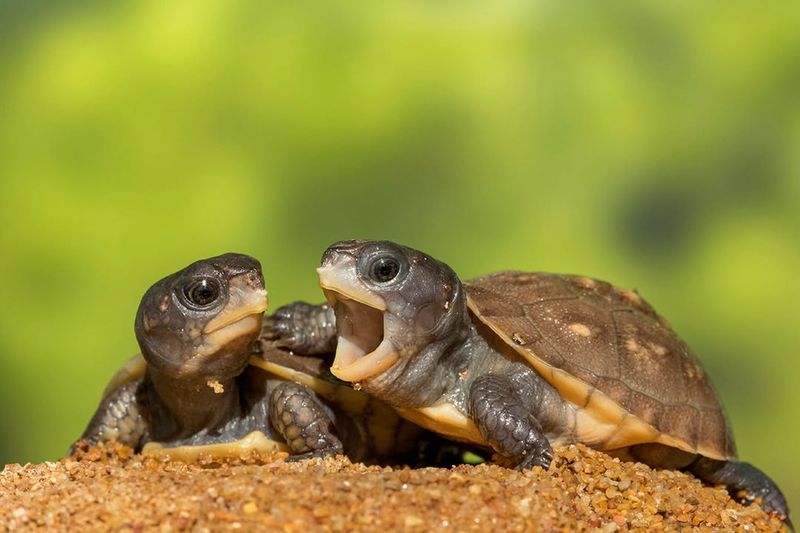
Missouri’s forests are home to the Three-Toed Box Turtle, a unique reptile known for its distinctive features and gentle demeanor. These turtles can grow up to 6 inches long, their olive-brown shells providing excellent camouflage.
The Three-Toed Box Turtle is named for the number of toes on its hind feet, a characteristic that sets it apart from other turtles. They’re often found slowly traversing forest paths, blending seamlessly with the surroundings.
Encountering a Three-Toed Box Turtle in Missouri is a delightful experience, offering insight into the tranquil pace of woodland life. Their presence underscores the importance of preserving the natural habitats they call home.
26. Common Snapping Turtle (Montana)
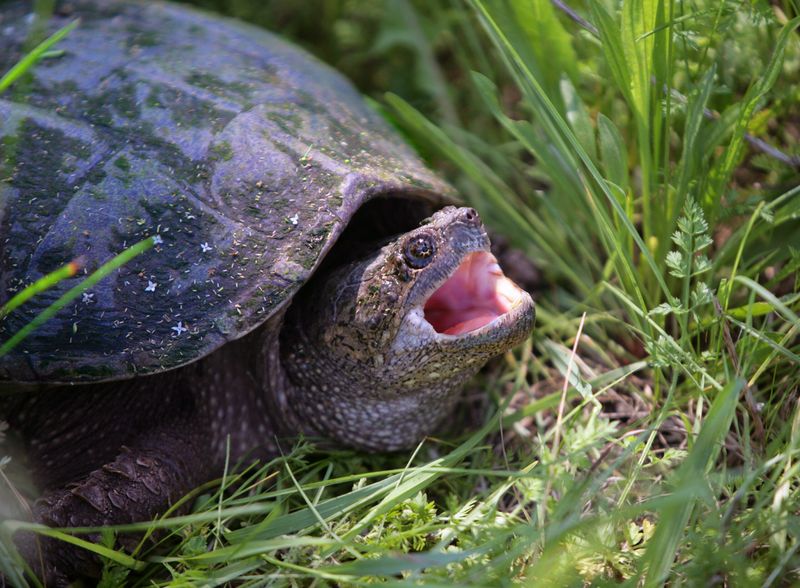
Montana’s pristine lakes are home to the Common Snapping Turtle, a reptile of formidable reputation known for its size and ancient appearance. These turtles can weigh up to 35 pounds, their rugged shells reminiscent of prehistoric times.
Snapping turtles are often found lurking in lakes and ponds, their powerful jaws and fierce demeanor making them effective predators in their domain. Despite their intimidating presence, they play a crucial role in maintaining the health of aquatic ecosystems.
Encountering a snapping turtle in Montana offers a glimpse into the hidden world of freshwater life, where ancient creatures continue to thrive amidst modern landscapes.
27. Prairie Rattlesnake (Nebraska)
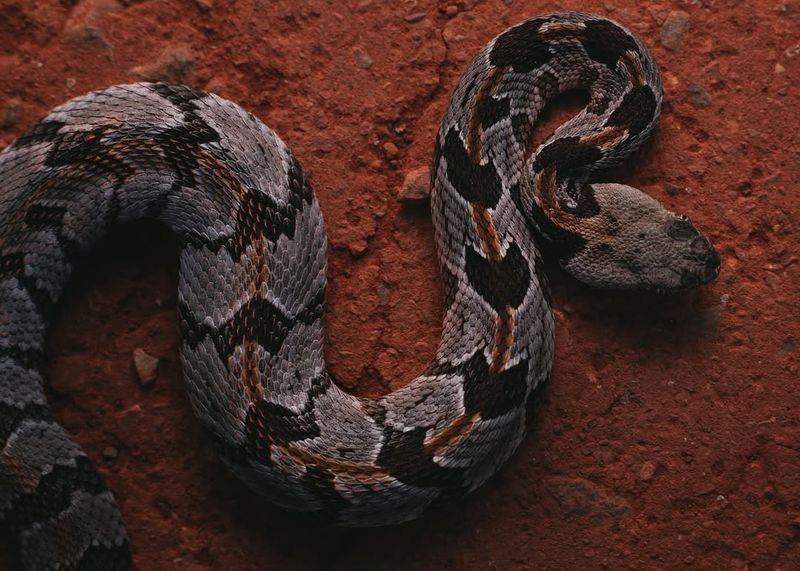
Nebraska’s vast prairies are home to the Prairie Rattlesnake, a reptile that commands respect with its size and striking appearance. These snakes can reach lengths of 4 feet, their distinct rattle a hallmark of their identity.
The Prairie Rattlesnake’s camouflage is remarkable, blending seamlessly with the grasslands where it hunts. Despite their fearsome reputation, these snakes are shy, only using their rattle as a last resort.
Observing a Prairie Rattlesnake in its natural habitat is a testament to the balance of life on the prairie, where each creature plays a vital role in the ecosystem’s harmony.
28. Desert Tortoise (Nevada)
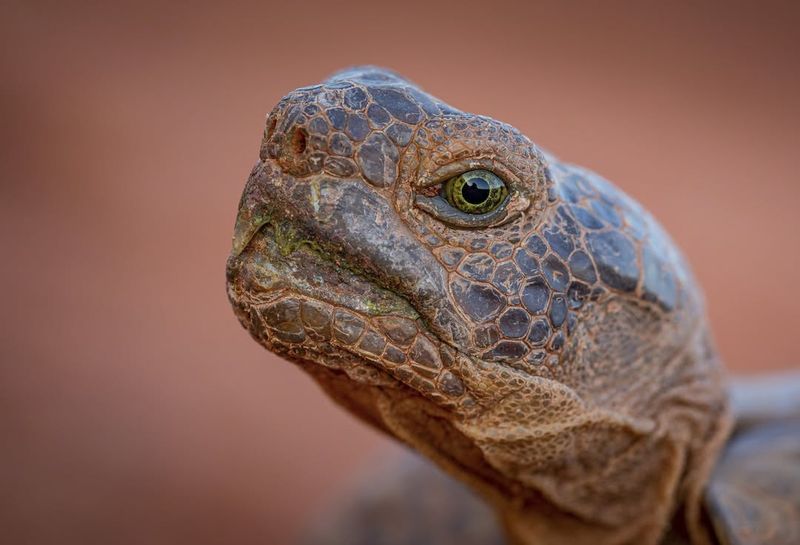
Nevada’s arid deserts are home to the Desert Tortoise, a reptile known for its impressive size and rugged appearance. These tortoises can weigh up to 15 pounds, their sturdy shells weathered by the harsh desert elements.
Desert Tortoises are masters of survival, capable of withstanding extreme temperatures and scarce water supplies. They’re often seen slowly traversing the desert landscape, a testament to their resilience.
Observing a Desert Tortoise in Nevada is like witnessing a living relic, a creature that has adapted to thrive in one of the world’s most challenging environments. Their presence highlights the importance of conserving these remarkable reptiles.
29. Timber Rattlesnake (New Hampshire)
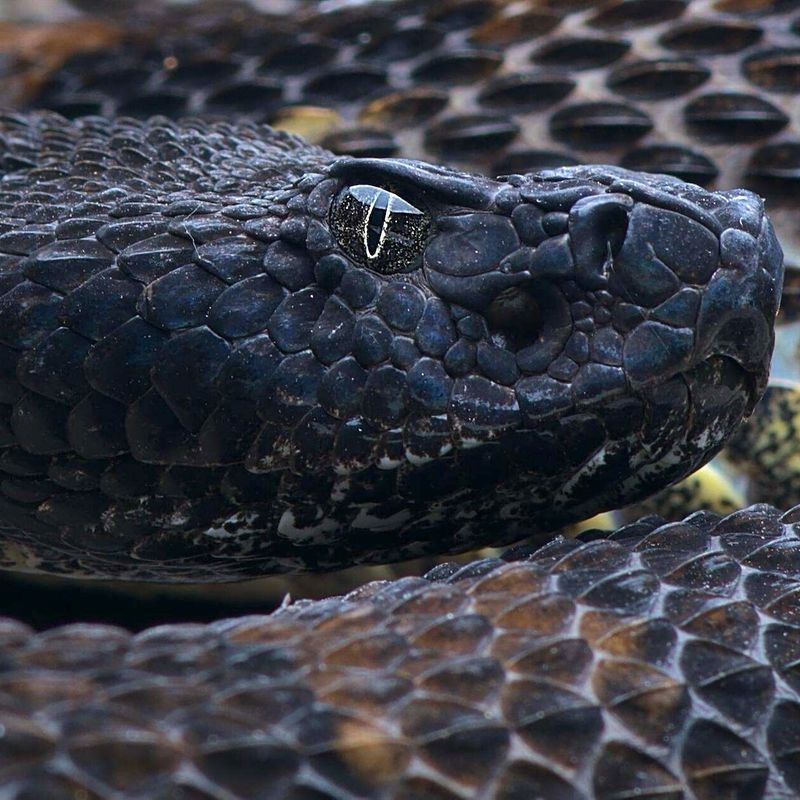
New Hampshire’s rocky outcrops are home to the elusive Timber Rattlesnake, a reptile known for its size and formidable presence. These snakes can grow over 5 feet long, their scales providing perfect camouflage among the rocks.
The Timber Rattlesnake’s distinctive rattle is used to warn potential threats, though they prefer to remain hidden, avoiding unnecessary confrontation. They play a vital role in controlling rodent populations, highlighting their importance in the ecosystem.
Spotting a Timber Rattlesnake in New Hampshire is a rare and thrilling experience, offering a glimpse into the delicate balance of nature where predators and prey coexist.
30. Eastern Box Turtle (New Jersey)
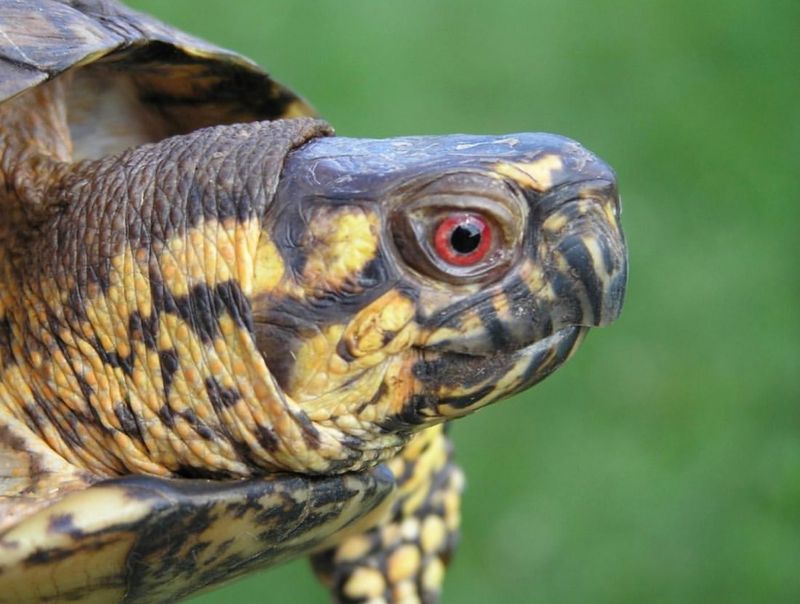
New Jersey’s woodlands are home to the Eastern Box Turtle, a reptile that stands out with its colorful shell and gentle demeanor. These turtles can grow up to 6 inches long, their intricate patterns a visual delight.
With a domed shell that offers excellent protection, box turtles can retreat entirely within when threatened. This adaptation ensures their survival in diverse habitats.
Spotting an Eastern Box Turtle in New Jersey is a delightful experience, offering a serene connection with the natural world. Their presence highlights the importance of conserving the delicate balance of forest ecosystems.
31. Common Snapping Turtle (New Mexico)
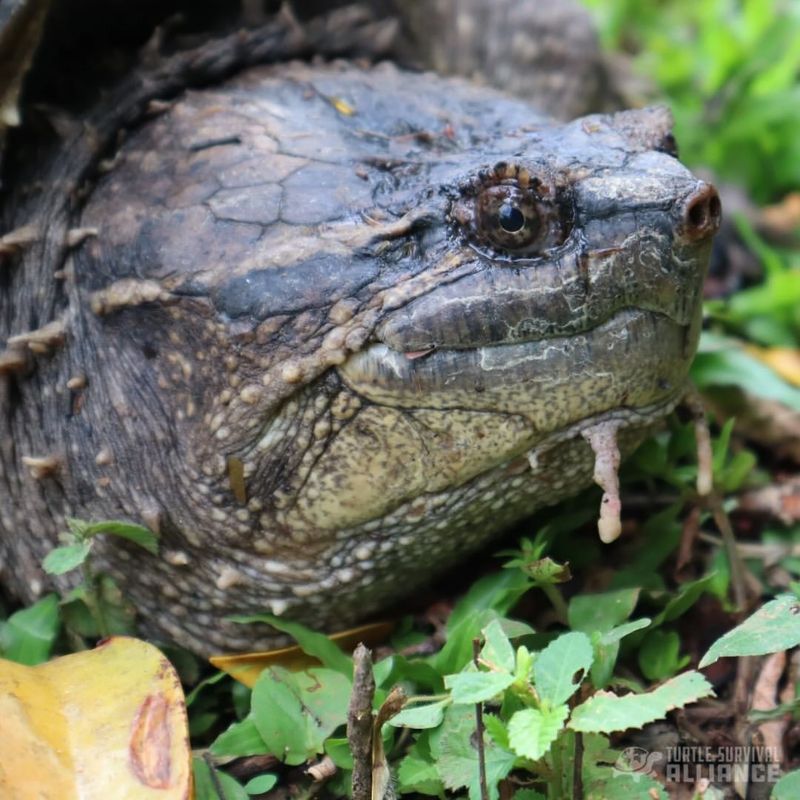
In the diverse landscapes of New Mexico, the Common Snapping Turtle emerges as a reptile of formidable reputation, known for its size and ancient appearance. These turtles can weigh up to 35 pounds, their rugged shells reminiscent of prehistoric times.
Snapping turtles are often found lurking in ponds and rivers, their powerful jaws and fierce demeanor making them effective predators in their domain. Despite their intimidating presence, they play a crucial role in maintaining the health of aquatic ecosystems.
Encountering a snapping turtle in New Mexico offers a glimpse into the hidden world of freshwater life, where ancient creatures continue to thrive amidst modern landscapes.
32. Timber Rattlesnake (New York)
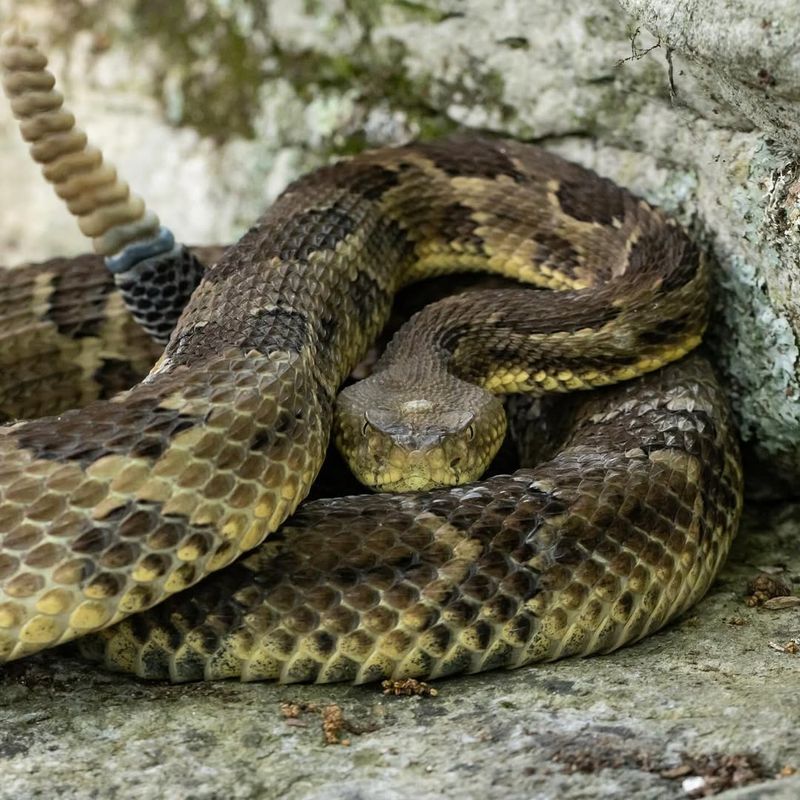
New York’s diverse landscapes are home to the Timber Rattlesnake, a reptile that captivates with its size and formidable presence. These snakes can grow over 5 feet long, their scales providing perfect camouflage among the rocks.
The Timber Rattlesnake’s distinctive rattle is used to warn potential threats, though they prefer to remain hidden, avoiding unnecessary confrontation. They play a vital role in controlling rodent populations, highlighting their importance in the ecosystem.
Spotting a Timber Rattlesnake in New York is a rare and thrilling experience, offering a glimpse into the delicate balance of nature where predators and prey coexist.
33. Eastern Box Turtle (North Carolina)

In the lush forests of North Carolina, the Eastern Box Turtle stands as the largest reptile, captivating with its colorful shell. These turtles can grow up to 6 inches long, displaying intricate orange and yellow patterns.
Their domed shells provide excellent protection, allowing them to retreat entirely within when threatened. This unique adaptation is a testament to their survival in diverse environments.
Eastern Box Turtles are often spotted on forest floors, their slow and deliberate movements blending seamlessly with the surroundings. Encountering one offers a glimpse into the serene pace of woodland life, a reminder of nature’s delicate balance.
34. Eastern Box Turtle (North Dakota)
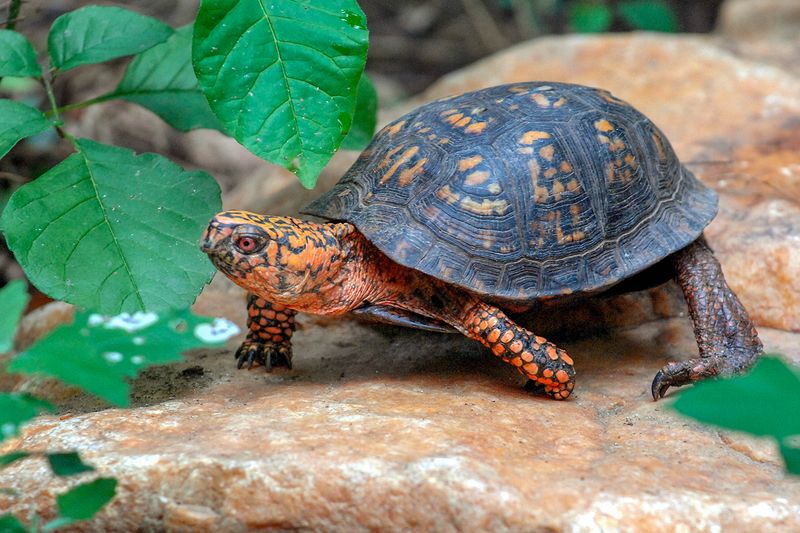
North Dakota’s prairies are home to the Eastern Box Turtle, a reptile that captivates with its vibrant shell patterns. These turtles can grow up to 6 inches long, their colorful shells a visual delight.
The Eastern Box Turtle’s domed shell offers excellent protection, allowing it to retreat entirely within when threatened. This adaptation ensures their survival in diverse environments.
Encountering an Eastern Box Turtle in North Dakota is a peaceful experience, offering a connection with the serene pace of prairie life. Their presence highlights the importance of conserving the delicate balance of natural habitats.
35. Common Snapping Turtle (Ohio)
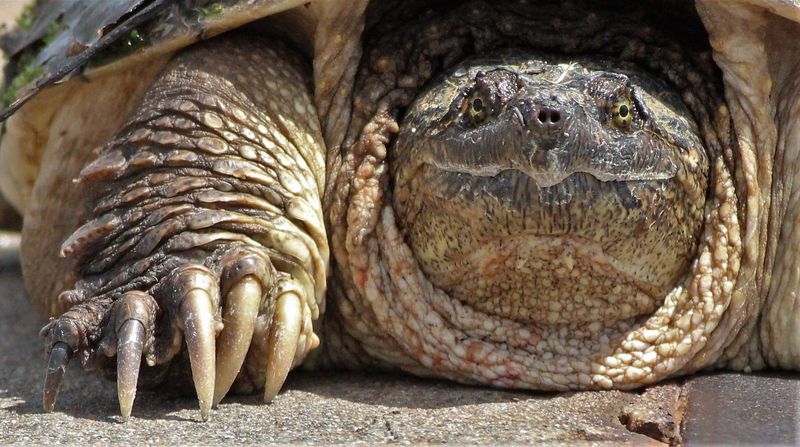
In the heartlands of Ohio, the Common Snapping Turtle is a reptile of formidable reputation, known for its size and attitude. These turtles can weigh up to 35 pounds, their rugged shells giving them a prehistoric appearance.
Snapping turtles are often found lurking in murky ponds and rivers, waiting patiently for prey. Their powerful jaws and fierce expression make them effective predators in their aquatic domain.
While they may seem intimidating, snapping turtles play a crucial role in their ecosystem, controlling fish populations and cleaning waterways. Observing one in its natural habitat offers a glimpse into the hidden dynamics of aquatic life.
36. Common Snapping Turtle (Oklahoma)
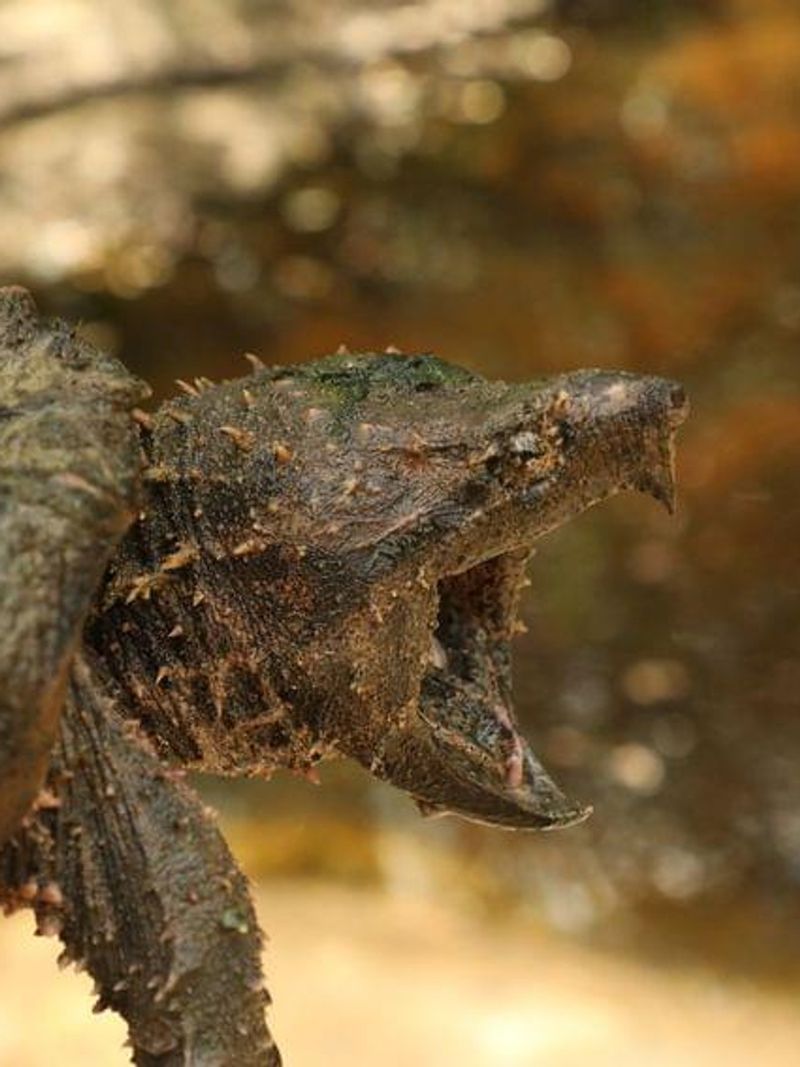
In the diverse landscapes of Oklahoma, the Common Snapping Turtle emerges as a reptile of formidable reputation, known for its size and ancient appearance. These turtles can weigh up to 35 pounds, their rugged shells reminiscent of prehistoric times.
Snapping turtles are often found lurking in ponds and rivers, their powerful jaws and fierce demeanor making them effective predators in their domain. Despite their intimidating presence, they play a crucial role in maintaining the health of aquatic ecosystems.
Encountering a snapping turtle in Oklahoma offers a glimpse into the hidden world of freshwater life, where ancient creatures continue to thrive amidst modern landscapes.
37. Western Pond Turtle (Oregon)
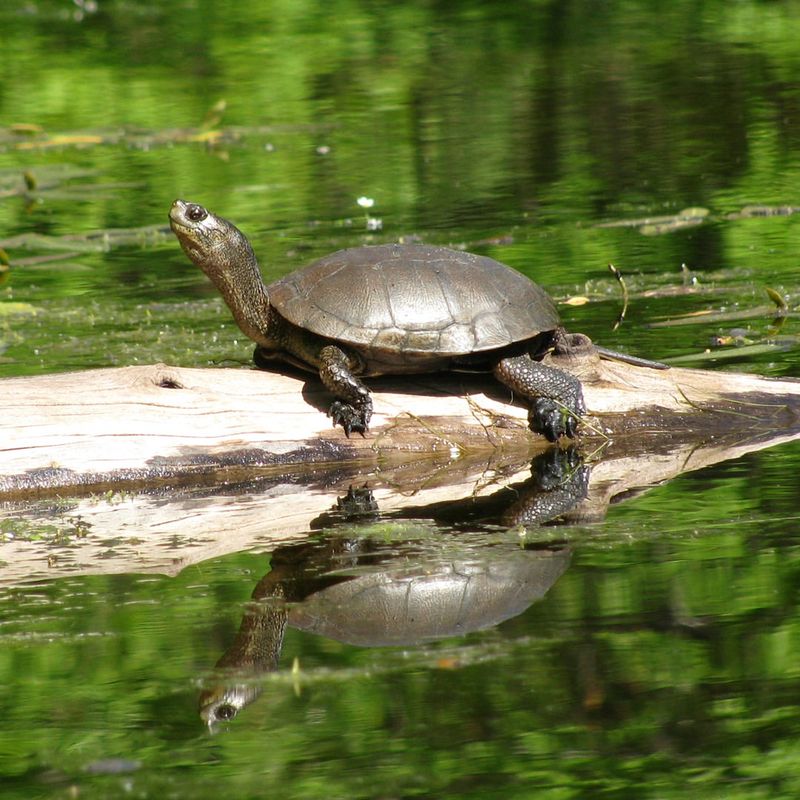
In the picturesque state of Oregon, the Western Pond Turtle claims the title of the largest reptile, although it’s quite humble in size compared to others. These turtles can grow up to 8 inches in length.
Their mottled brown and yellow shells provide excellent camouflage among the pond vegetation. They’re often seen basking on logs or rocks, soaking up the sun’s warmth.
Western Pond Turtles are a testament to the tranquil beauty of Oregon’s aquatic habitats. Their presence indicates a healthy ecosystem, and observing them offers a peaceful connection with nature.
38. Eastern Box Turtle (Pennsylvania)
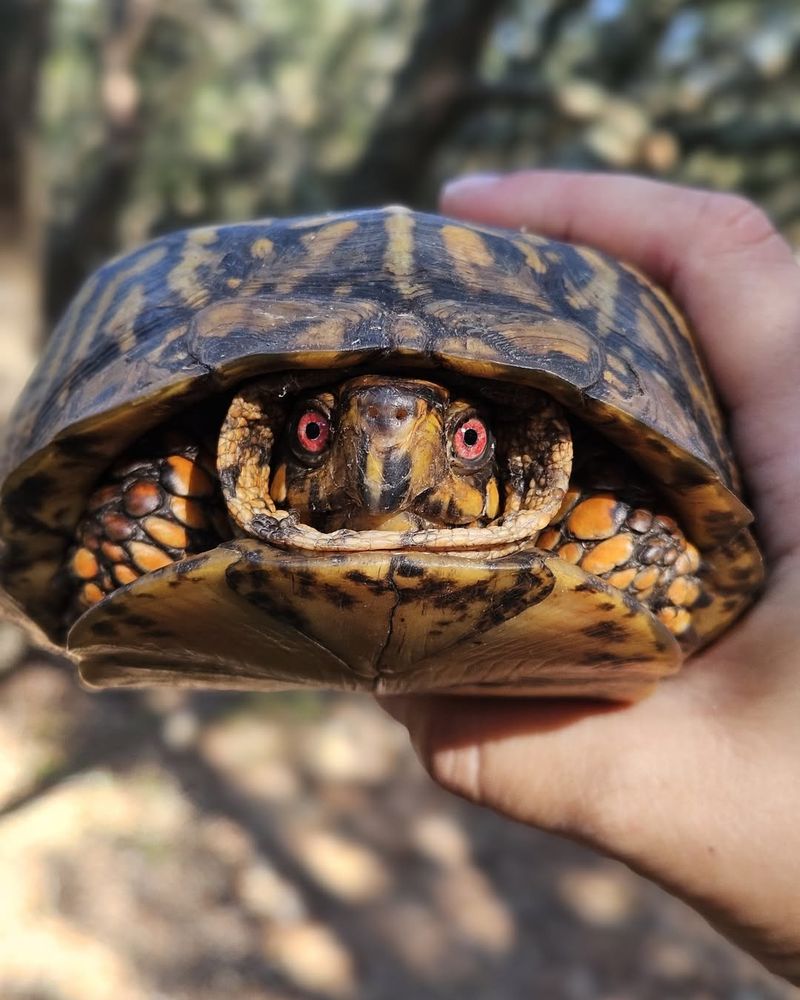
In Pennsylvania’s woodlands, the Eastern Box Turtle captivates with its vibrant shell and gentle nature. These turtles can grow up to 6 inches long, their colorful patterns a visual delight.
With a domed shell that offers excellent protection, box turtles can retreat entirely within when threatened. This adaptation ensures their survival in diverse environments.
Encountering an Eastern Box Turtle in Pennsylvania offers a connection with the serene pace of forest life. Their presence highlights the importance of conserving the delicate balance of woodland ecosystems.
39. Eastern Indigo Snake (Rhode Island)
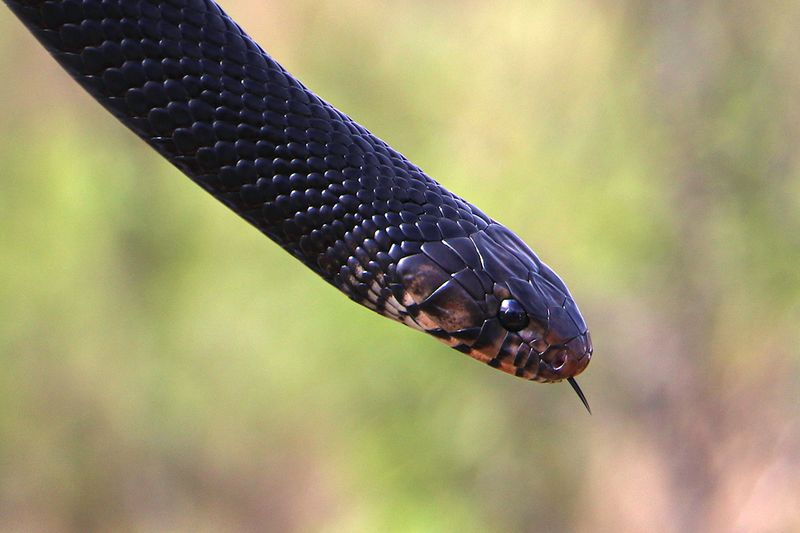
In the varied landscapes of Rhode Island, the Eastern Indigo Snake emerges as a fascinating reptile, known for its impressive length and striking appearance. These snakes can grow over 6 feet long, their glossy blue-black scales a standout feature.
The Eastern Indigo Snake is a skilled predator, often seen navigating forest floors in search of prey. Their diet primarily consists of small mammals, helping control populations and maintain ecological balance.
Despite their size, these snakes are non-venomous and pose little threat to humans. Observing an Eastern Indigo Snake in Rhode Island offers a glimpse into the hidden dynamics of forest life, where each creature plays a vital role.
40. Cottonmouth (South Carolina)
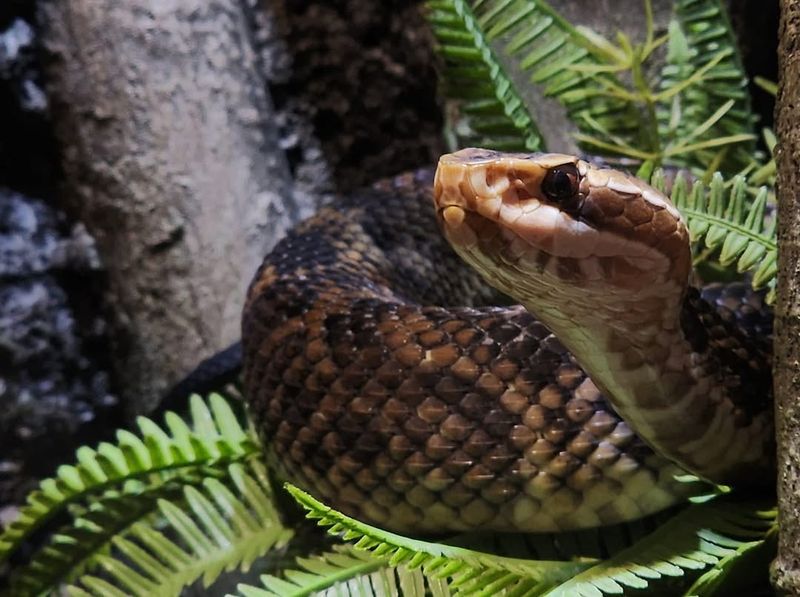
South Carolina’s swamps are home to the Cottonmouth, a snake known for its impressive size and fearsome reputation. These snakes can grow over 4 feet long, their distinctive white mouths a warning to potential threats.
The Cottonmouth, also known as the Water Moccasin, is often found near water, where it hunts for fish and amphibians. Despite their aggressive demeanor, they prefer to avoid confrontation, using their camouflage to remain undetected.
Encountering a Cottonmouth in South Carolina’s swamps is both thrilling and humbling. Their role in the ecosystem as both predator and prey highlights the delicate balance of nature’s intricate web.
41. Common Snapping Turtle (South Dakota)
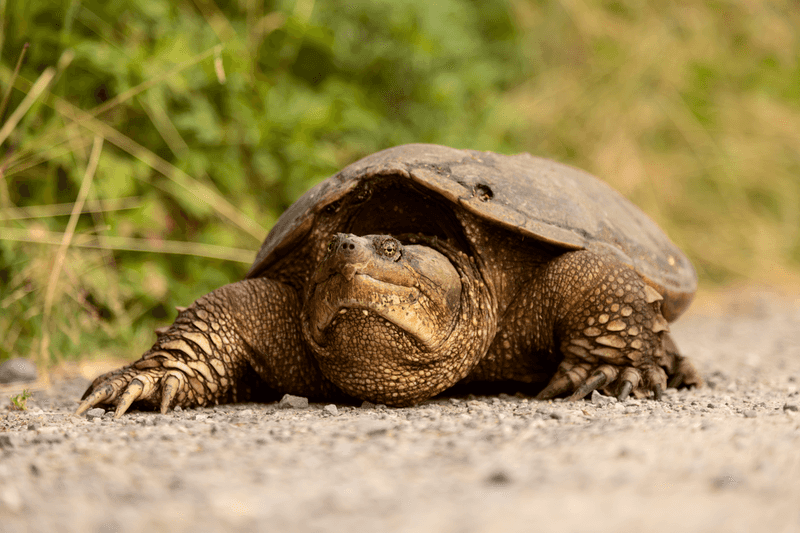
South Dakota’s pristine lakes are home to the Common Snapping Turtle, a reptile of formidable reputation known for its size and ancient appearance. These turtles can weigh up to 35 pounds, their rugged shells reminiscent of prehistoric times.
Snapping turtles are often found lurking in lakes and ponds, their powerful jaws and fierce demeanor making them effective predators in their domain. Despite their intimidating presence, they play a crucial role in maintaining the health of aquatic ecosystems.
Encountering a snapping turtle in South Dakota offers a glimpse into the hidden world of freshwater life, where ancient creatures continue to thrive amidst modern landscapes.
42. Eastern Box Turtle (Tennessee)

Tennessee’s lush forests are home to the Eastern Box Turtle, a reptile that captivates with its vibrant shell patterns. These turtles can grow up to 6 inches long, their colorful patterns a visual delight.
The Eastern Box Turtle’s domed shell offers excellent protection, allowing it to retreat entirely within when threatened. This adaptation ensures their survival in diverse environments.
Encountering an Eastern Box Turtle in Tennessee offers a glimpse into the tranquil pace of forest life. Their presence highlights the importance of conserving the delicate balance of woodland ecosystems.
43. Texas Alligator Lizard (Texas)
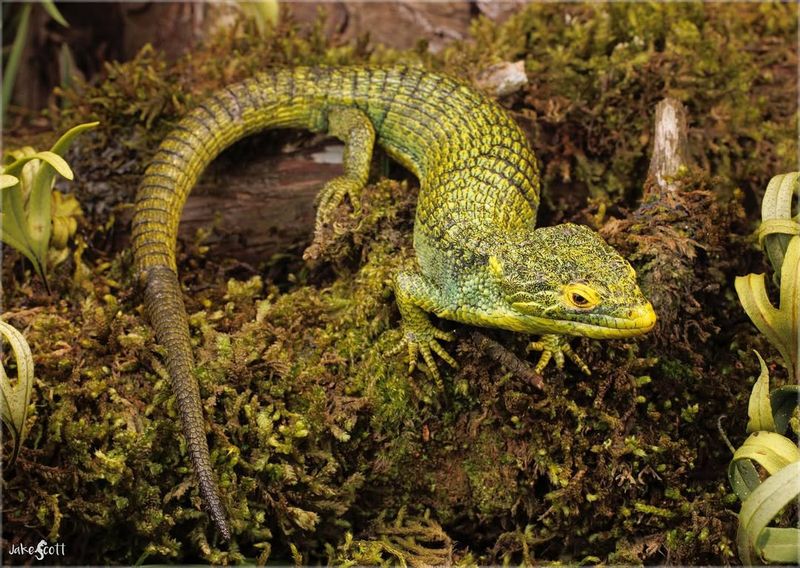
In the vast landscapes of Texas, the Texas Alligator Lizard stands out with its impressive size and rugged appearance. These lizards can reach lengths of over 2 feet, their long tails and sturdy bodies a testament to their resilience.
The Texas Alligator Lizard is often seen basking on rocks, soaking up the sun’s warmth to regulate its body temperature. Their diet includes insects and small rodents, playing a crucial role in controlling pest populations.
Observing a Texas Alligator Lizard in the wild offers a fascinating glimpse into the adaptability of reptiles in diverse environments. Their presence highlights the importance of conserving Texas’s unique wildlife.
44. Gila Monster (Utah)
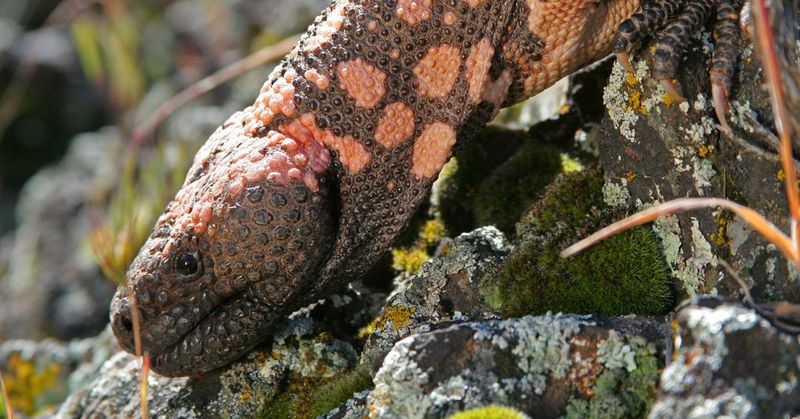
Utah’s rocky deserts are home to the Gila Monster, a lizard of impressive size and vibrant coloration. Reaching lengths of 2 feet, this reptile is renowned for its unique orange and black patterned skin.
The Gila Monster is one of the few venomous lizards in the world, though it’s not typically a threat to humans. Its venom, used primarily for defense, adds to its mystique.
These lizards are often seen navigating the rocky desert terrain, a testament to the harsh environment they call home. Observing a Gila Monster in Utah is witnessing a living piece of desert art, combining beauty and survival.
45. Eastern Ratsnake (Vermont)
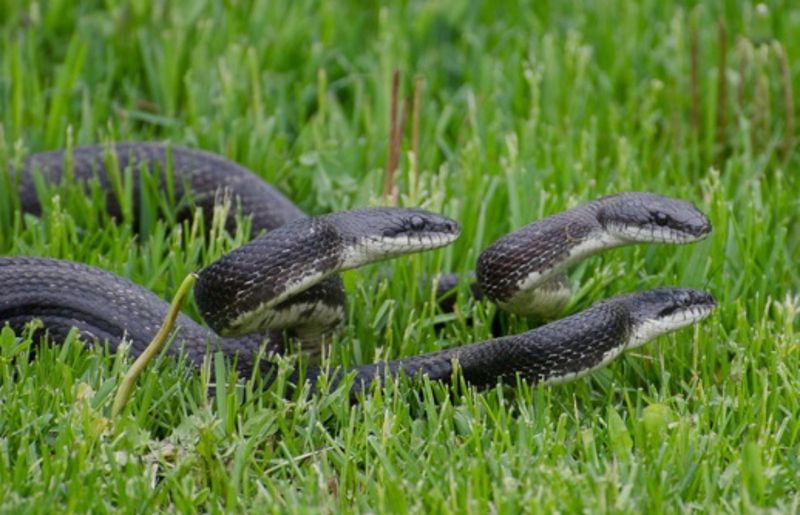
In the picturesque landscapes of Vermont, the Eastern Ratsnake emerges as a captivating reptile, known for its impressive length and sleek appearance. These snakes can grow over 6 feet long, their glossy black scales a standout feature.
The Eastern Ratsnake is an agile climber, often seen navigating trees and forest floors in search of prey. Their diet primarily consists of rodents, helping control pest populations.
Despite their size, these snakes are non-venomous and pose little threat to humans. Observing an Eastern Ratsnake in Vermont offers a glimpse into the hidden dynamics of forest life, where each creature plays a vital role.
46. Common Snapping Turtle (Virginia)
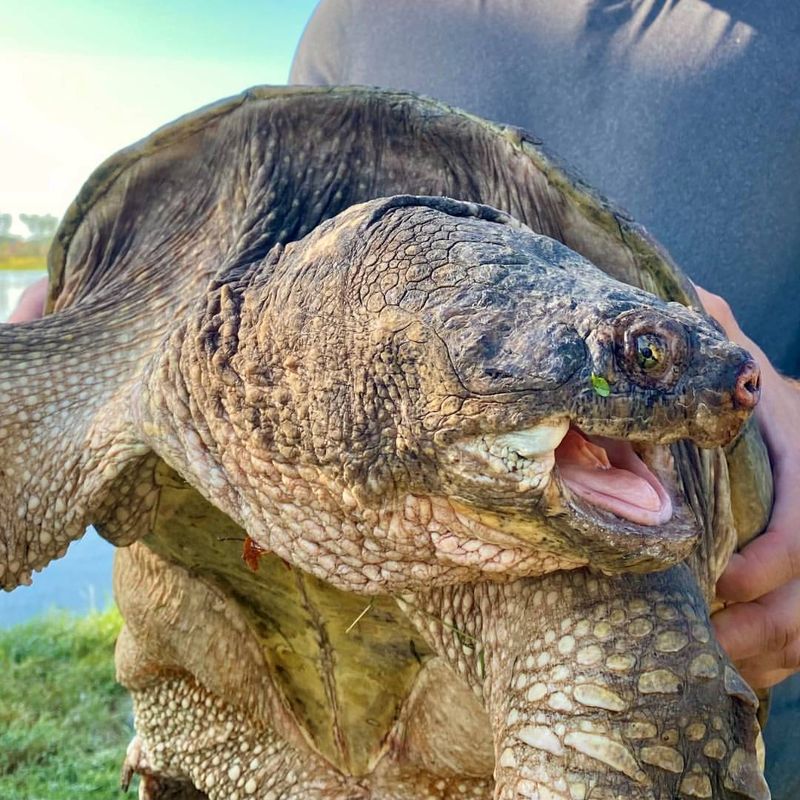
In the heartlands of Virginia, the Common Snapping Turtle is a reptile of formidable reputation, known for its size and attitude. These turtles can weigh up to 35 pounds, their rugged shells giving them a prehistoric appearance.
Snapping turtles are often found lurking in murky ponds and rivers, waiting patiently for prey. Their powerful jaws and fierce expression make them effective predators in their aquatic domain.
While they may seem intimidating, snapping turtles play a crucial role in their ecosystem, controlling fish populations and cleaning waterways. Observing one in its natural habitat offers a glimpse into the hidden dynamics of aquatic life.
47. Western Painted Turtle (Washington)
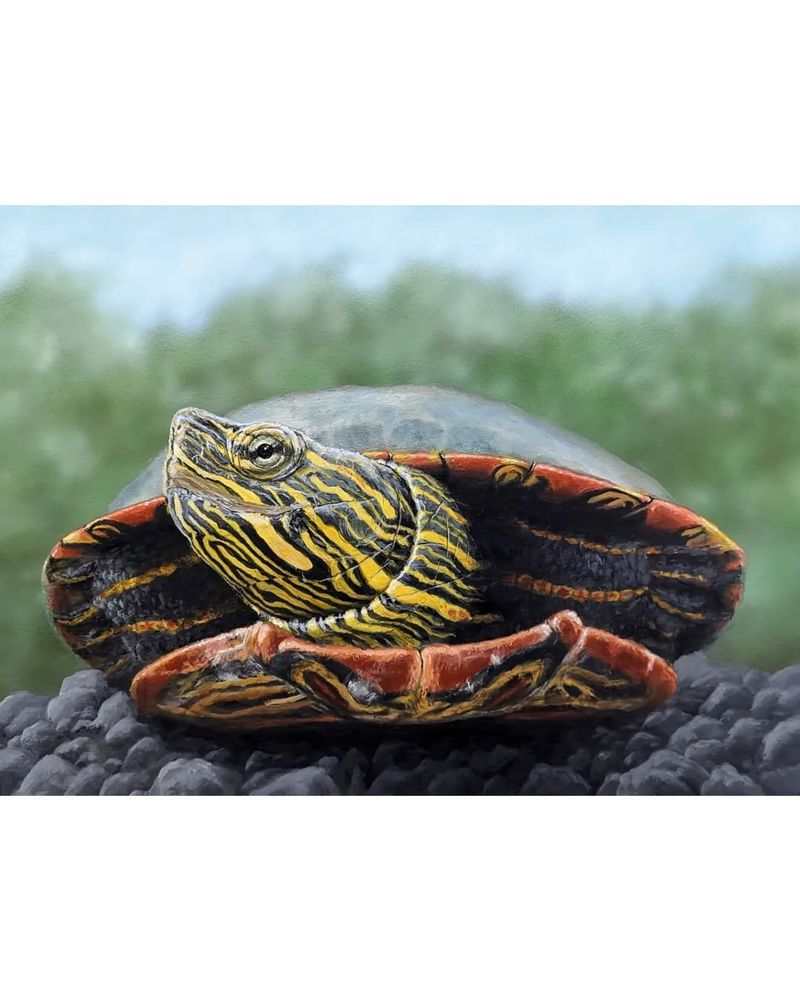
In the serene waters of Washington, the Western Painted Turtle emerges as the largest reptile, though it’s a modest size compared to others. Measuring up to 10 inches in shell length, these turtles are a testament to resilience in colder climates.
Their striking red and yellow shell markings make them stand out in the Washington waters. They can often be found basking on rocks, absorbing much-needed warmth from the sun.
Despite the chilly environment, these turtles thrive by hibernating during colder months, showcasing a remarkable adaptation. Observing them in their natural habitat offers a unique insight into the tenacity of life in the northwest.
48. Eastern Box Turtle (West Virginia)

West Virginia’s woodlands are home to the Eastern Box Turtle, a reptile that captivates with its colorful shell and gentle nature. These turtles can grow up to 6 inches long, their vibrant patterns a visual delight.
With a domed shell that offers excellent protection, box turtles can retreat entirely within when threatened. This adaptation ensures their survival in diverse environments.
Encountering an Eastern Box Turtle in West Virginia is a peaceful experience, offering a connection with the serene pace of forest life. Their presence highlights the importance of conserving the delicate balance of woodland ecosystems.
49. Common Snapping Turtle (Wisconsin)
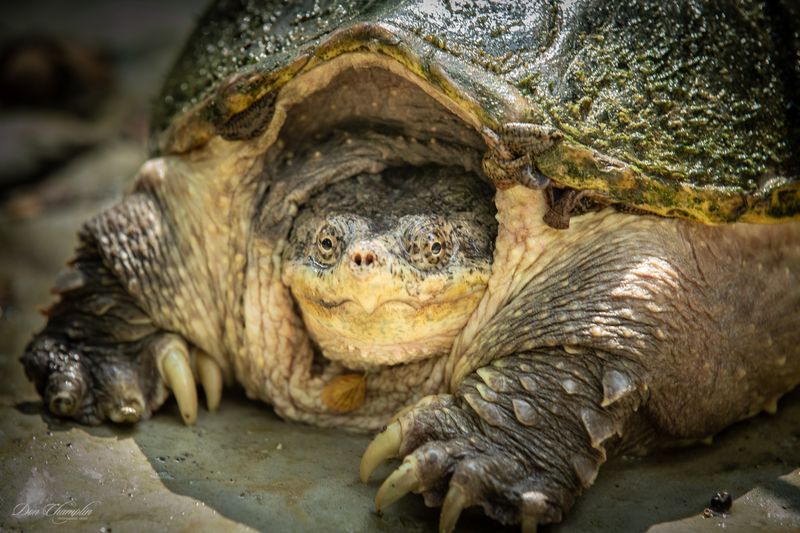
In the heartlands of Wisconsin, the Common Snapping Turtle is a reptile of formidable reputation, known for its size and attitude. These turtles can weigh up to 35 pounds, their rugged shells giving them a prehistoric appearance.
Snapping turtles are often found lurking in ponds and rivers, waiting patiently for prey. Their powerful jaws and fierce expression make them effective predators in their aquatic domain.
While they may seem intimidating, snapping turtles play a crucial role in their ecosystem, controlling fish populations and cleaning waterways. Observing one in its natural habitat offers a glimpse into the hidden dynamics of aquatic life.
50. Western Painted Turtle (Wyoming)
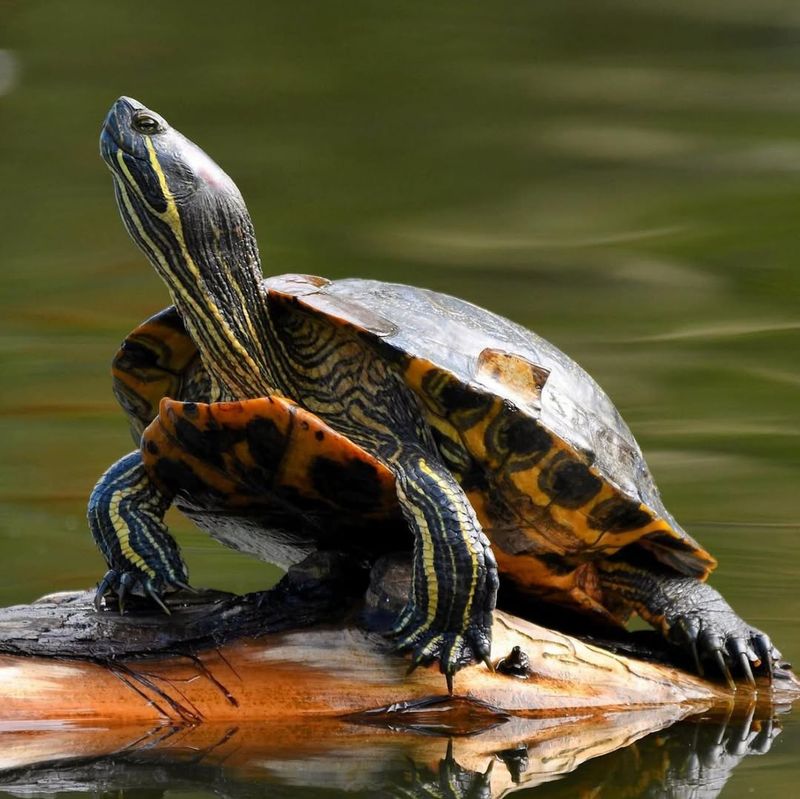
In the serene waters of Wyoming, the Western Painted Turtle emerges as the largest reptile, though it’s a modest size compared to others. Measuring up to 10 inches in shell length, these turtles are a testament to resilience in colder climates.
Their striking red and yellow shell markings make them stand out in the Wyoming waters. They can often be found basking on rocks, absorbing much-needed warmth from the sun.
Despite the chilly environment, these turtles thrive by hibernating during colder months, showcasing a remarkable adaptation. Observing them in their natural habitat offers a unique insight into the tenacity of life in the northwest.
